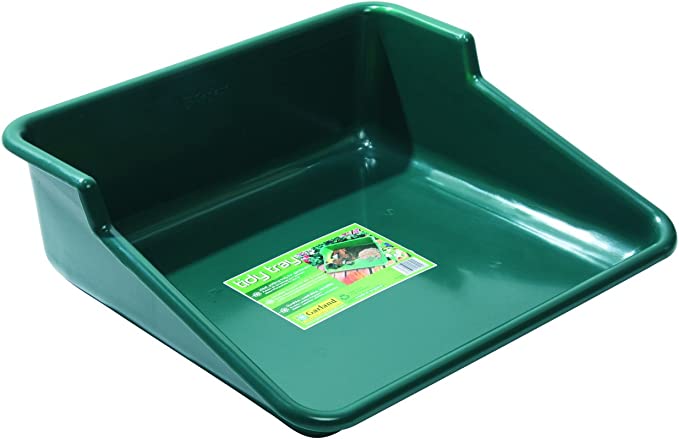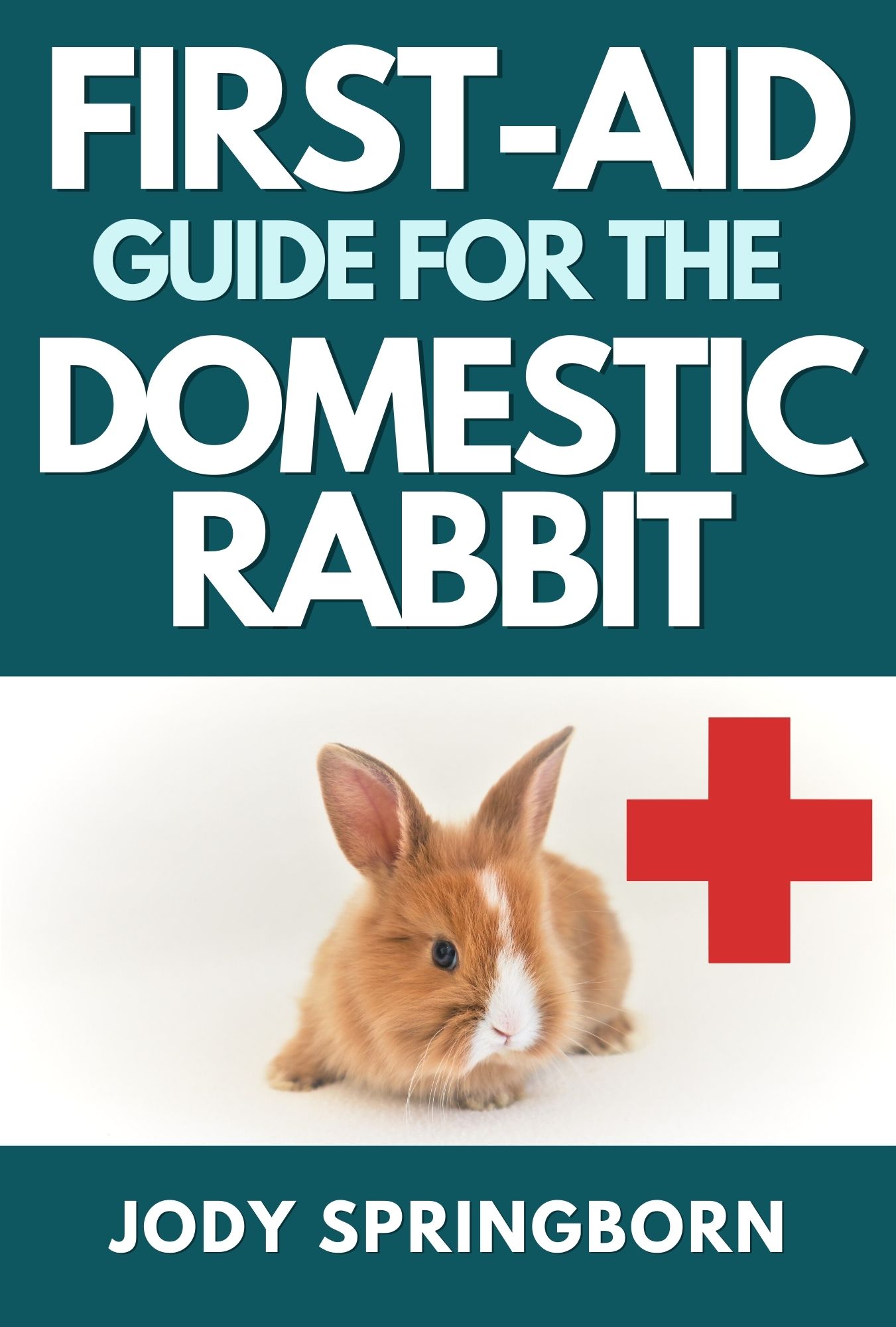- Home
- Rear End Paralysis Care
Rear End Paralysis Care:
Setting up the Pen and Socialization
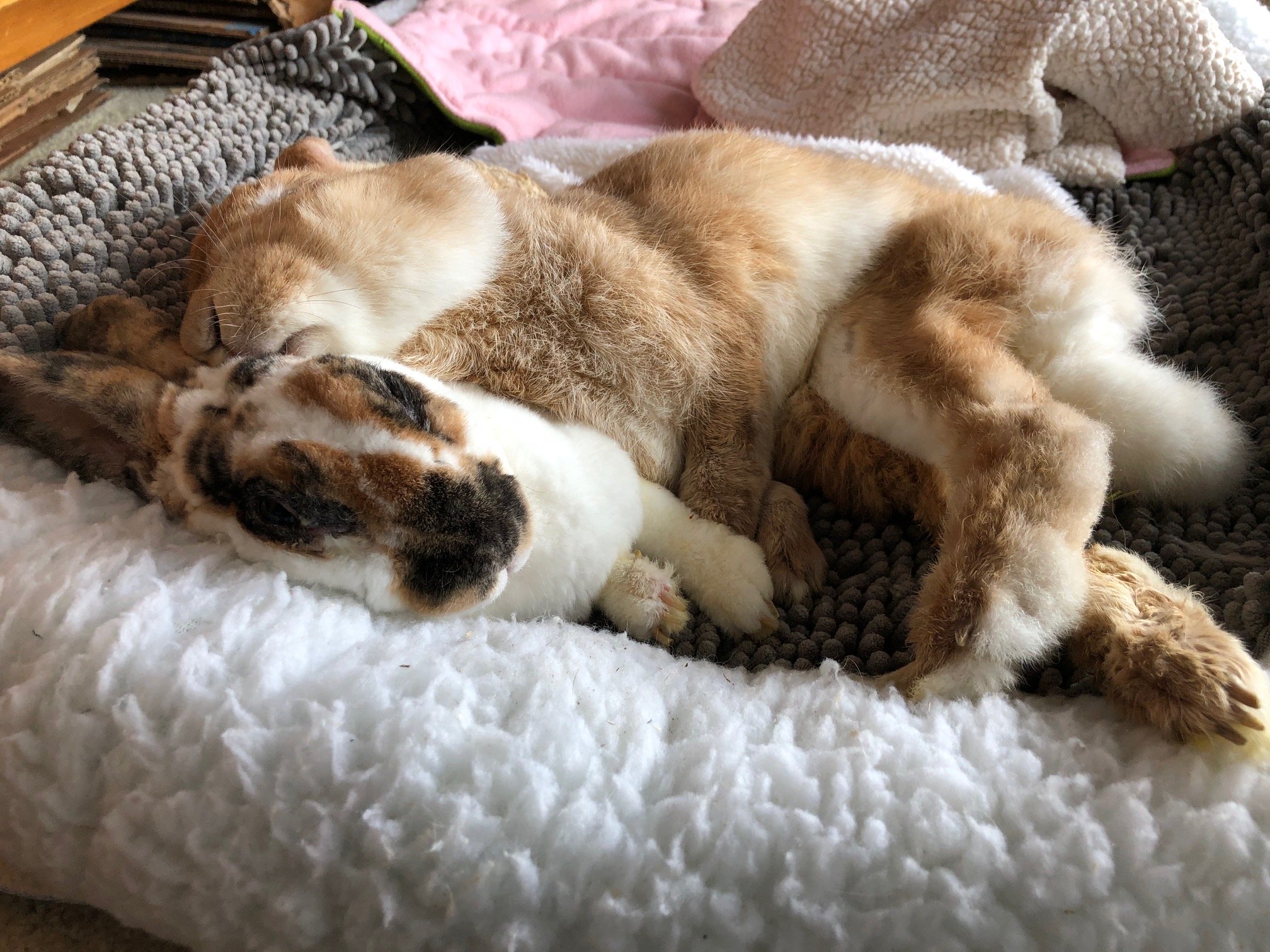 Poppy with her favorite pillow, Roxanne.
Poppy with her favorite pillow, Roxanne.What Happens Now?
Rear end paralysis care may seem daunting, especially if this is the first time you are faced with this disability. Fortunately, it's not as complicated as it first appears. This series of articles will explain four important aspects when caring for a rear end paralysis bunny. In this article, I will talk about the first two points.
- Setting up the pen
- Socialization
- Food and water
- Cleanilness
While you are planning your own routine with your disabled rabbit, keep in mind these three questions which will guide you through the topics mentioned above:
- Is my bunny comfortable? This will determine what you need to change in your bunny's living area. You may need to administer medications, do physical therapy exercises and alter feeding routines.
- Is my bunny clean? Making sure your bunny is not laying in urine and cecotropes.
- Is my bunny dry? Making sure your bunny stays clean and dry.
The answer to these questions will guide you as to what you need to do. A more detailed discussion about what these questions mean can be found in Senior Rabbit Care.
Rear End Paralysis Care: Consulting Your Vet
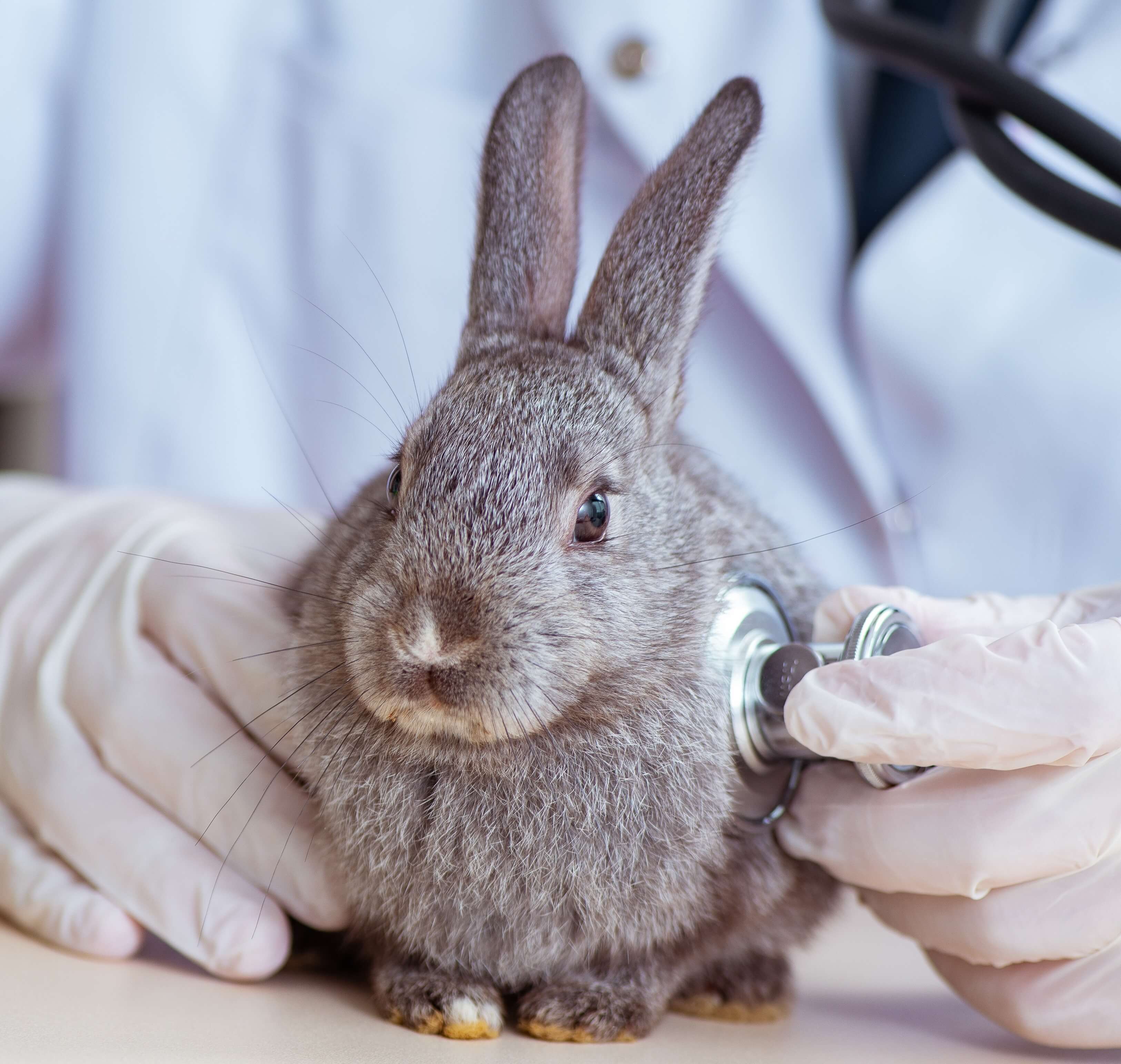 Elnur|Shuttershock.com
Elnur|Shuttershock.comSince there are many reasons why a rabbit develops rear end paralysis, it is important to bring your bunny to a vet as soon as you notice mobility issues. An experienced rabbit-savvy vet can better determine the cause and guide you in the next steps. The damage may be temporary or long term, depending on several factors such as age of the bunny, type of injury or disease, and the ability of the vet and owner to provide adequate supportive care.
Regardless of the reason for the immobility, pain management will be essential. It will be up to the owner to carefully monitor their bunny's discomfort and update their vet accordingly. There may be alterations to dosages or additional medications prescribed.
Your vet may even refer you to an animal physical therapist, who can show you different exercises and stretches that will make your bunny feel more comfortable. They may even provide acupuncture and massage services.
If you are interested in using homeopathic medicine, talk to your vet and see if you can be referred to a homeopathic vet. Never start a medication or treatment without consulting a vet first, as not all natural or organic therapies are harmless.
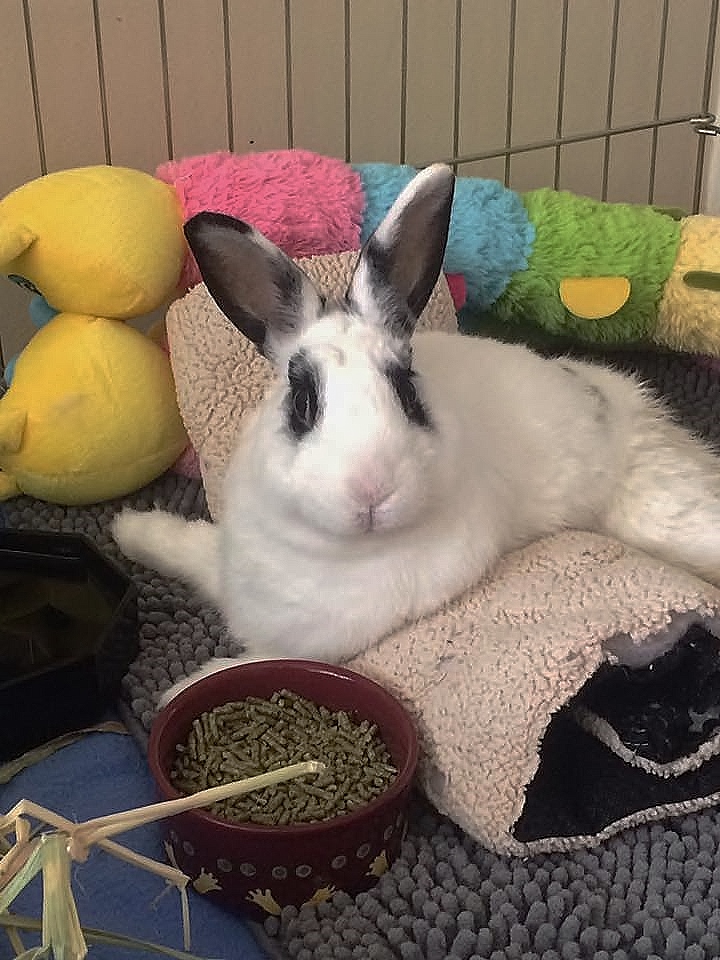 |
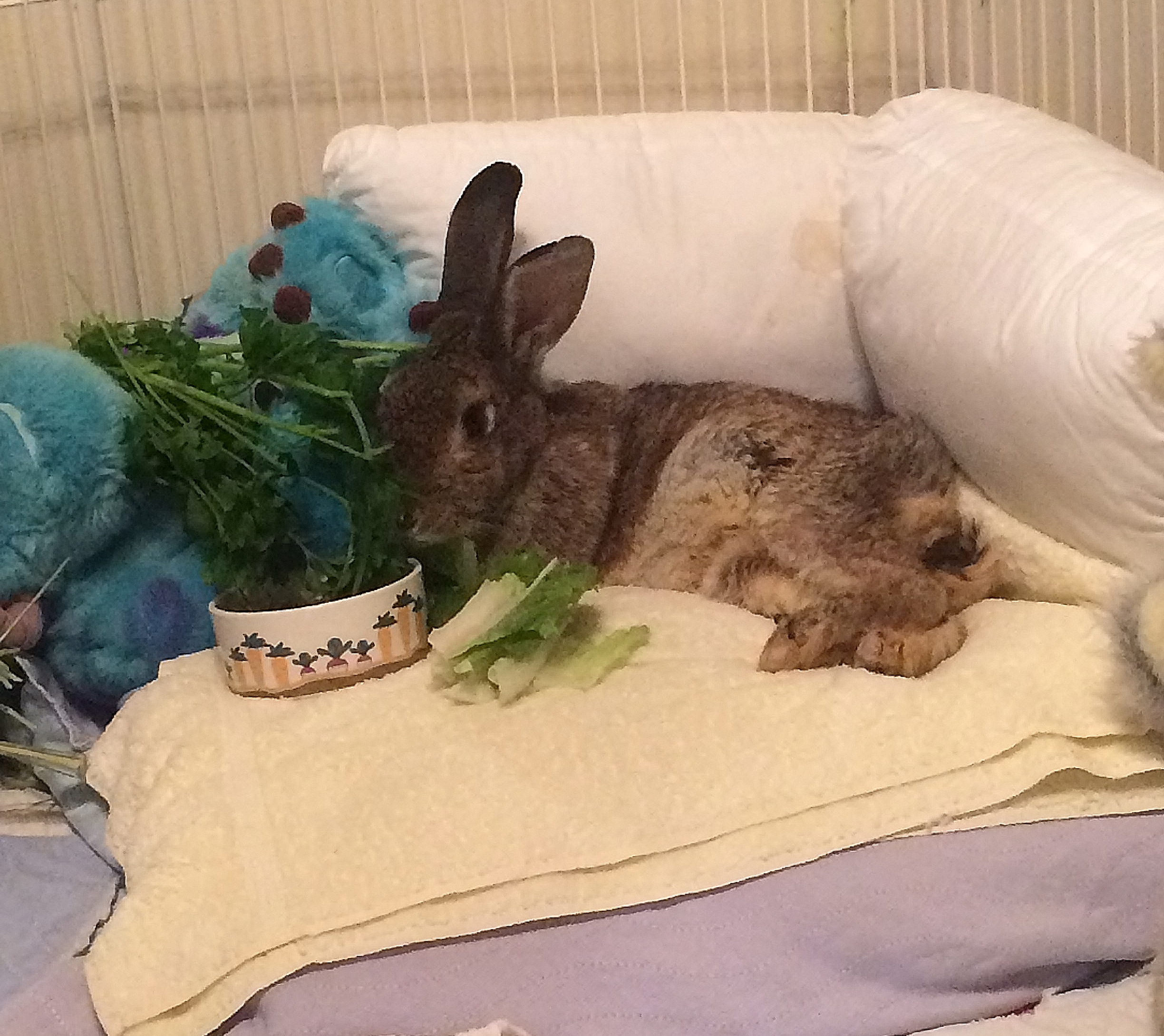 Petra (above) and Diamond (left) had rear end paralysis for different reasons, but their pen set-ups were similar. Petra (above) and Diamond (left) had rear end paralysis for different reasons, but their pen set-ups were similar. |
Rear End Paralysis Care: Setting Up The Space
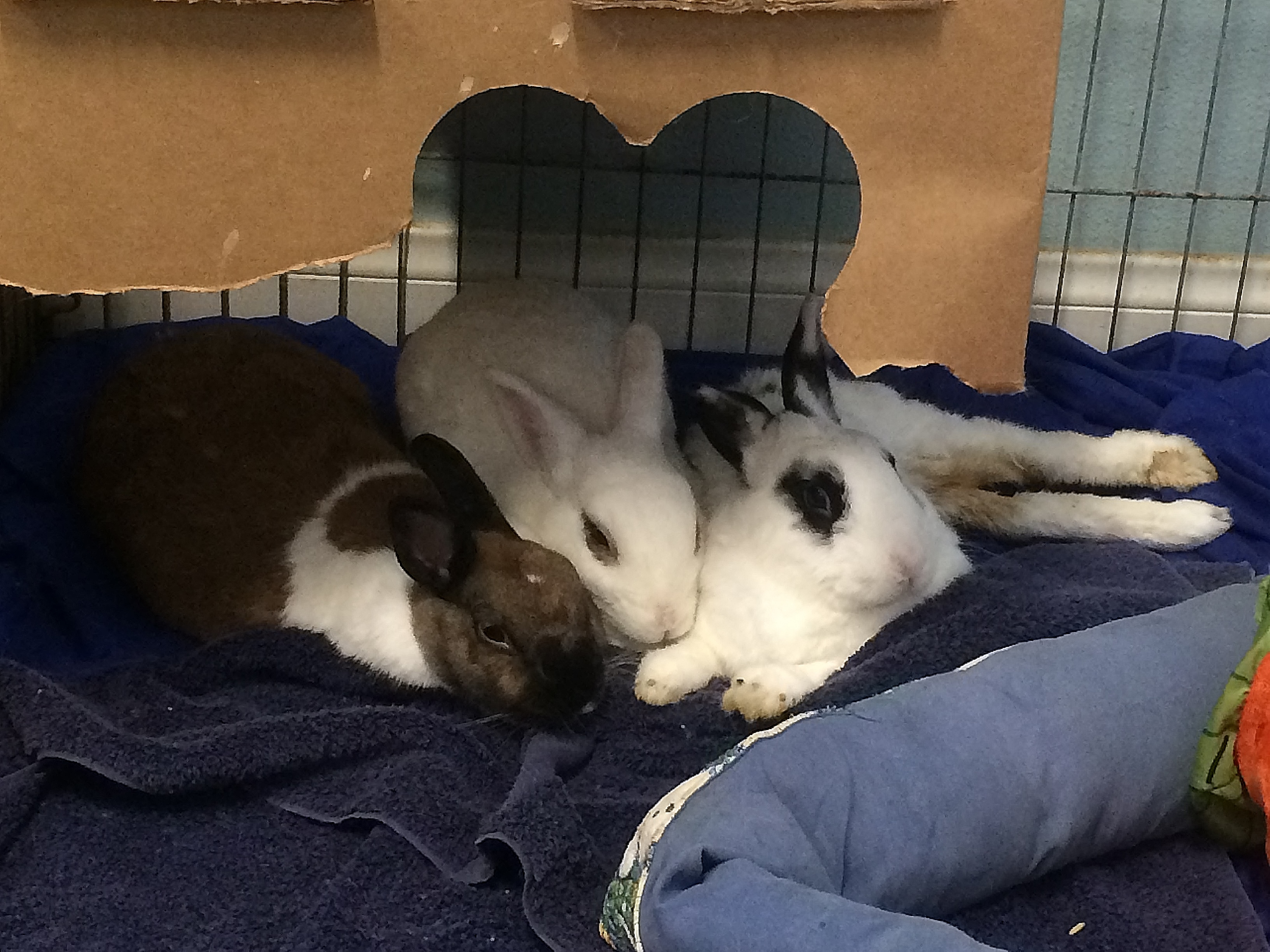 Gimini, Benny and Diamond. Only Diamond was disabled, but he loved being the center of attention and greeted anyone who would stop by his pen to say hello.
Gimini, Benny and Diamond. Only Diamond was disabled, but he loved being the center of attention and greeted anyone who would stop by his pen to say hello.The housing will depend on the reason for the disability. Some bunnies will move very little, however, if your disabled bunny is relatively young, he may surprise you as to how eager and determined he is in wanting to explore his surroundings.
There are a few things to keep in mind when creating a space for your rear end paralysis bunny.
- Bedding. It matters what your bunny is laying on. If your bun is on a sheet or even a towel, he will essentially be laying in urine. This will cause urine scald for the bunny and much more work for you in keeping your bunny clean. Use material that will wick away urine and moisture from your bunny's skin. If you do use a towel, check it often and change when necessary.
- Food and water dishes. Don't make it difficult for your bunny to eat and drink. Use plates or shallow bowls for food and small bowls for water. If there is a chance your bunny may up end the bowl - or even worse - fall into a bowl and drown, use a water bottle or syringe-feed water. Make sure the veggies you feed out are wet (to increase water content).
- Litter box. If your bunny still has some mobility, a low entry litter box is a must. There are a few different ones you can buy, but they usually still have a lip that bunnies still need to hop over. If your bunny still wants to get into the box, but cannot navigate the low entry, you can take a regular cat box or multi-purpose box and cut away one side with a box cutter (you can also use your kitchen scissors, but I don't recommend it as it severely dulls the scissors and is hard on the hand). I don't recommend leaving your disabled bunny in the litter box all day, because it's not soft and the hay does not wick away the urine. However, it's a good place to set up your bunny for a few minutes while you clean his pen.
- Exercise. If your bunny is young and somewhat mobile, let him get some exercise. Provide the proper flooring. If you have hardwood, lay down area rugs that will not slide. Regular carpet may cause "rug burn". Laying down some foam mats (or yoga mats) will make mobility easier for your bunny and on his skin.
- Temperature. If your paralyzed bunny rarely moves, be aware that low blood pressure and reduced muscle mass may cause him to be cold. Never leave your bunny outside and make sure the room he lives in is at a comfortable temperature.
- Make him a star. Don't tuck your disabled bunny away in a basement, garage or back room. Make him a part of your family. Interact with him frequently, even if it's just to check if he would like a blueberry.
- Toys. Can your bunny get in and out of his hidey box? Is there a chance he could get trapped or injured from his toys? If your bunny has a favorite box he likes to sleep in, cut away the sides or fasten the box against the pen (see picture above) to make sure your disabled bun can still move freely.
The Sky's The Limit
One thing to keep in mind is that a bunny's comfort and needs are always changing, so don't worry about being "perfect" right away. Personally, I start with what I know and what has worked for me in the past. If I feel that the bunny is still uncomfortable, I will adjust his environment as I can. If I need more ideas, I may discuss other options with my vets or even with friends who have dealt with rear end paralysis or similar disabilities currently or in the past.
It's important to realize that there isn't a lot of items on the market sold specifically with rabbits in mind, and whatever is available, is not usually appropriate. Don't be afraid to wander down the dog and cat aisle at the pet store or go into a thrift store to see if you can find the perfect dish, blanket or pillow. Keep an open mind as to where you could purchase an item or if you can make it yourself.
Temporary Space
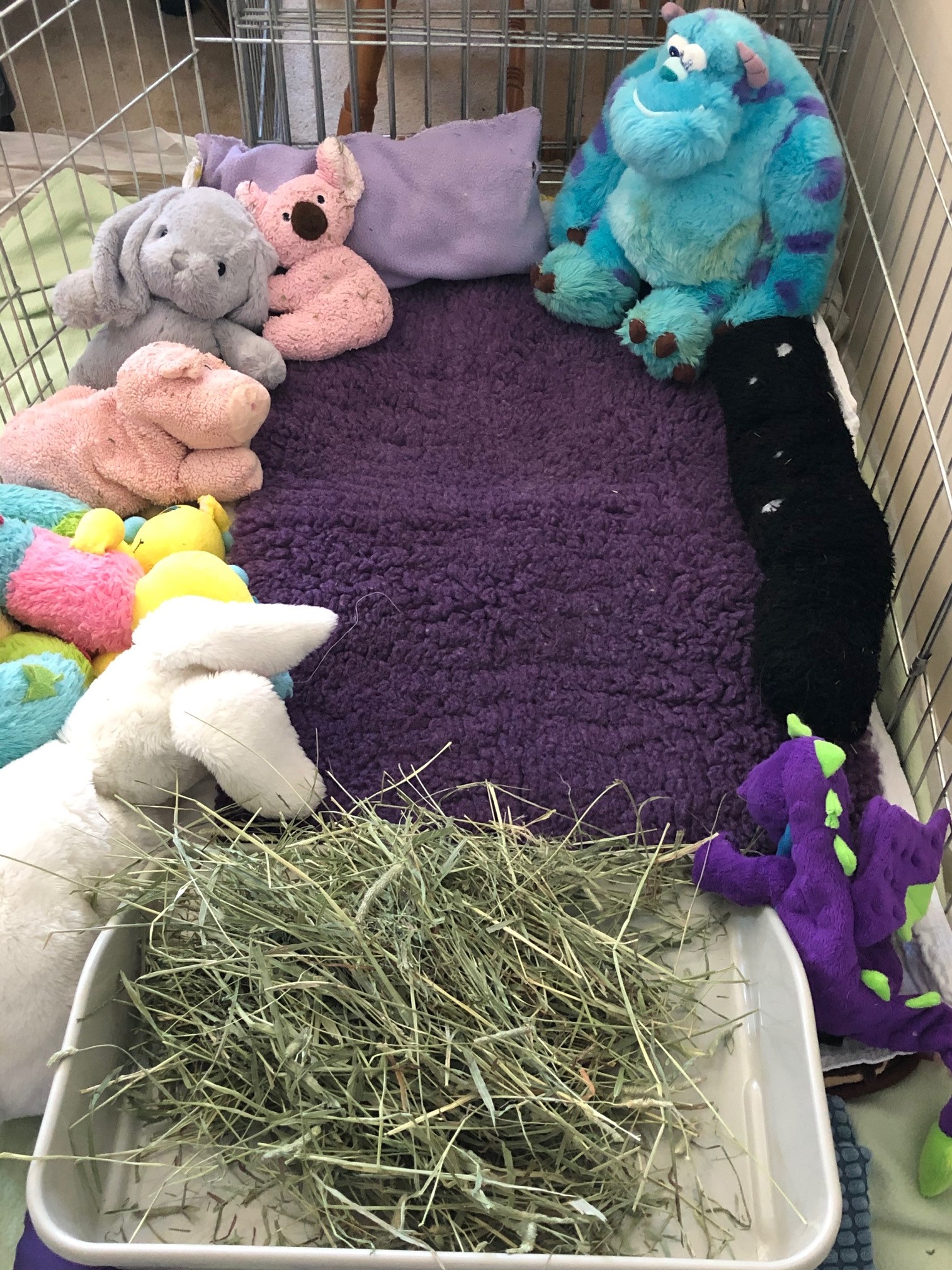 This is a 2x4 pen with several layers to soften the floor and a low entry litter box. Stuffed animals and pillows are used for support and to keep the disabled bunny from getting trapped in the pen bars or behind the litter box.
This is a 2x4 pen with several layers to soften the floor and a low entry litter box. Stuffed animals and pillows are used for support and to keep the disabled bunny from getting trapped in the pen bars or behind the litter box.If your bunny has suffered from a broken leg, your vet will most likely recommend a confined space for a number of weeks until the fracture heals.
That means reducing the pen size to include a litter box (or stack of hay), a hidey box and a bowl of water. The flooring should have some padding. Ideally, foam pads on the bottom, especially if the floor is hardwood or tile. Layer the bottom with blankets and towels. Keep in mind that the floor is unforgiving. If you have spent any length of time lying on the floor watching TV, reading a book or playing with your bunny, your back and joints become quite stiff in a short time. The very top layer should have some absorbent bedding like vet bedding, microfiber fleece mats (or something similar to wick away urine). The absorbent bedding should be changed twice daily to help keep the bunny dry.
If the bunny is still a baby (6 weeks of age or younger), this would be one of the very few instances in which a pet store cage is useful. Depending on the size of the cage (and the baby), you can pad the bottom with some fleece and reduce the amount of exercise space even further by adding a pillow or rolled up towel.
Long-Term Set-Up
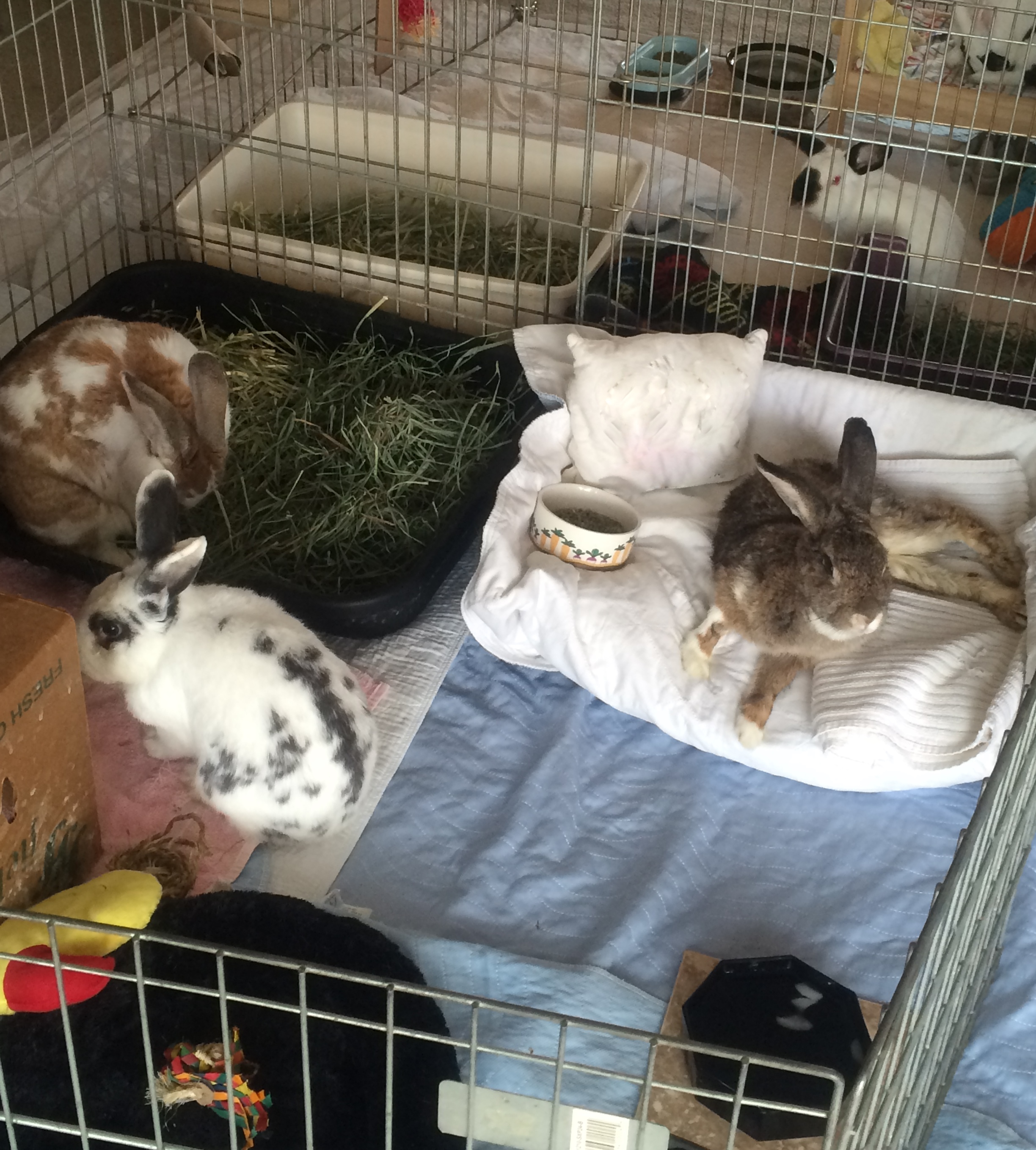 Your disabled bunny can still have friends. Petra got along well with
Benji and Nat. She was also able to
keep the peace by nipping Nat on the nose if he got too excited and tried
to jump on her or eat her food.
Your disabled bunny can still have friends. Petra got along well with
Benji and Nat. She was also able to
keep the peace by nipping Nat on the nose if he got too excited and tried
to jump on her or eat her food.Your long-term pen set-up will depend on the situation. You do not automatically need to separate a disabled bunny from his bonded friends, unless the disabled bunny is bullied. That will depend on the personalities involved. Some elderly bunnies are entirely able to keep others in line, despite their lack of mobility. You need to monitor meal times to make sure everyone gets their fair share of dinner and treats. Sometimes separating the disabled bunny for meals is necessary.
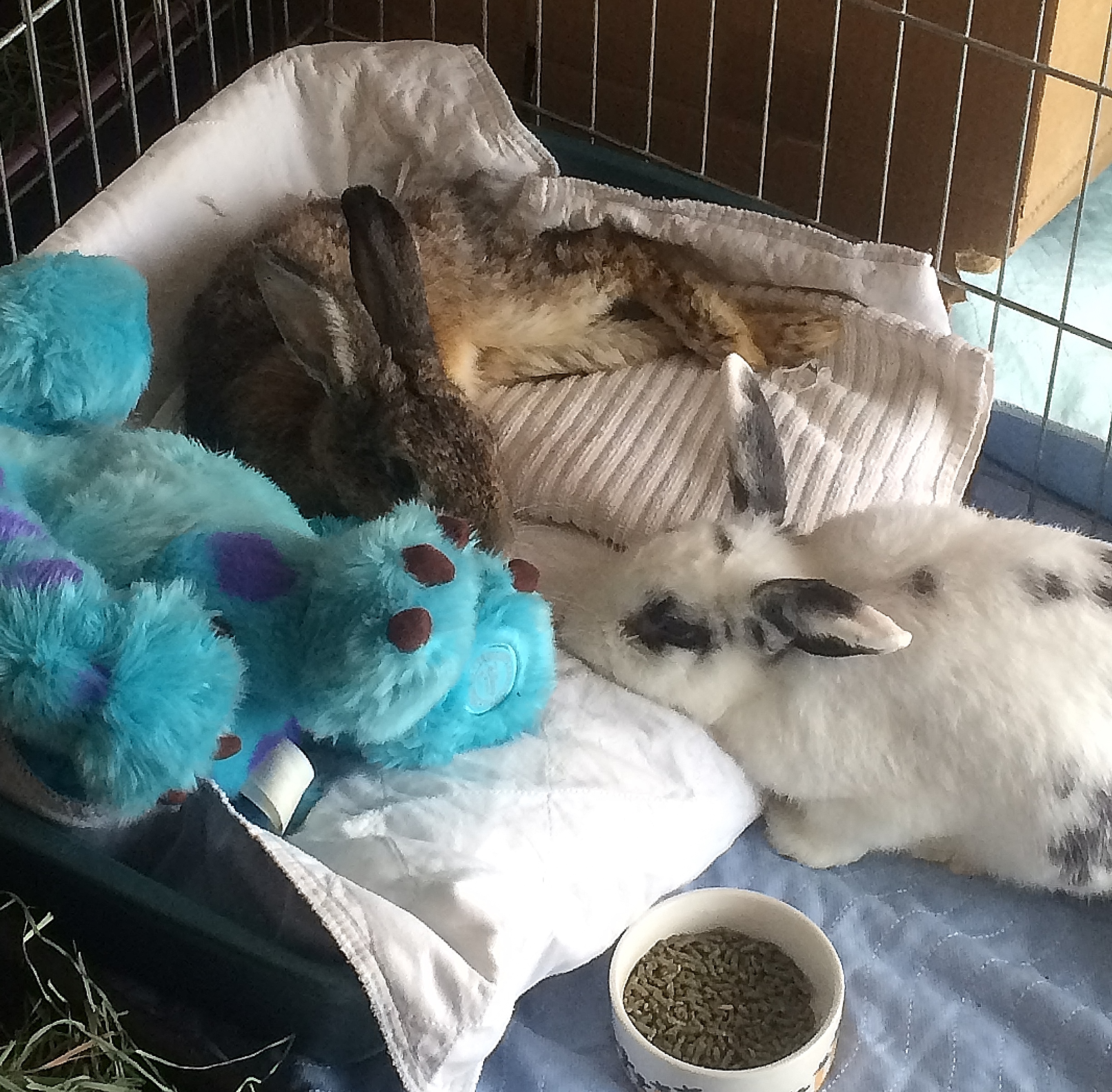 There are many benefits for keeping disabled bunnies together with their friends. Here Nat was snuggling with Petra. There are many benefits for keeping disabled bunnies together with their friends. Here Nat was snuggling with Petra. |
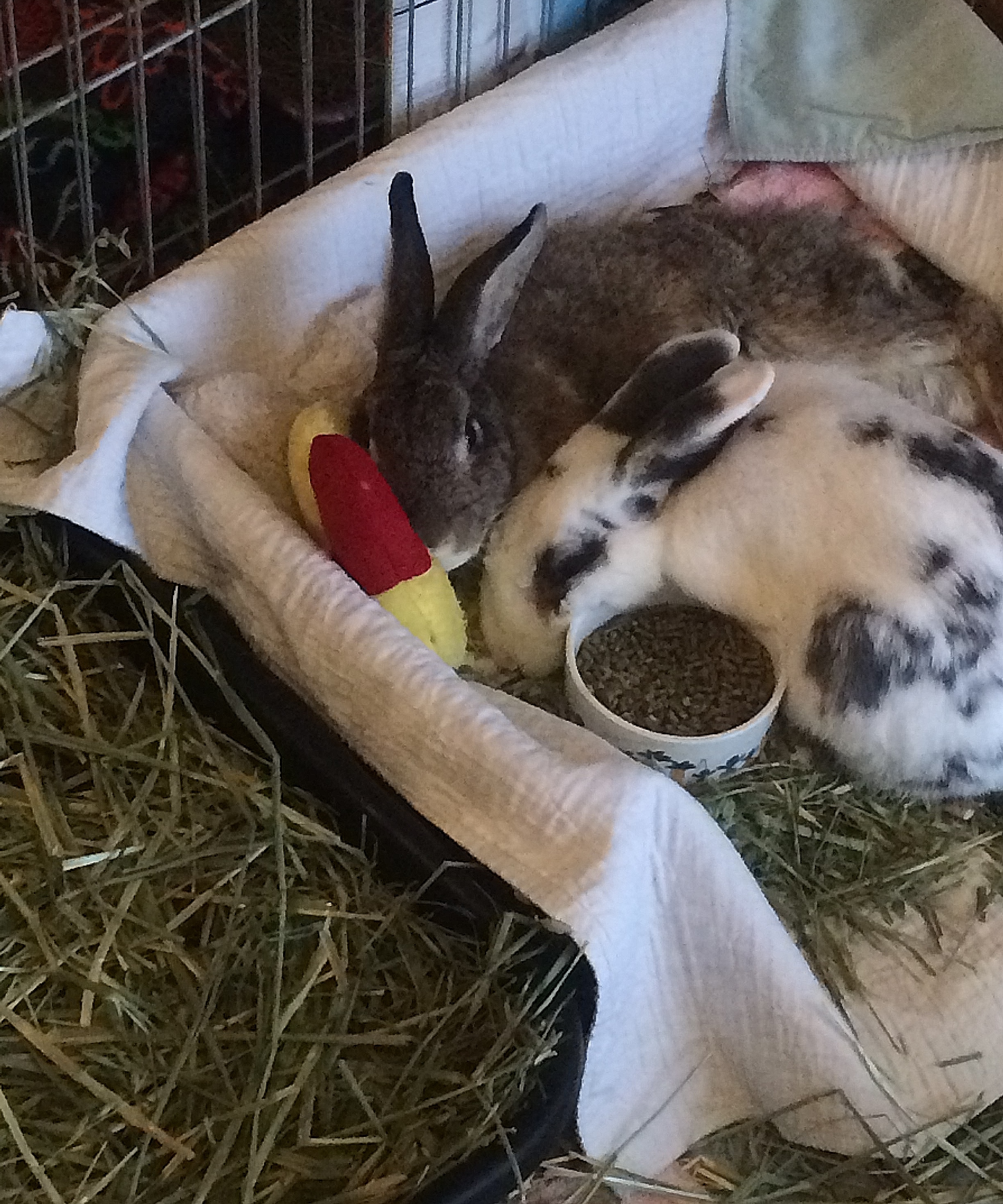 |
Although most bunnies like to flop on a bare floor, bunnies suffering from arthritis or any other joint ailment will find this painful. When figuring out how to set up a pen, keep comfort and cleanliness in mind. Pillows, blankets and stuffed animals can provide support, while pee pads and fleece can help keep the urine away from the bunny. Pee pads can also protect the bedding, so you don't have to change everything entirely - just the top layer.
Some of the things you can use while building your bed:
- Blankets and towels. If your bunny is lying on these directly, make sure he doesn't get caught in any holes.
- Travel or small pillows. These pillows can be ideal to help prop up bunnies.
- Stuffed animals. Some are just the right shape to support your bun. Make sure the bunny can't chew off and swallow glass/plastic eyes and noses.
- Dog toys. These toys have pet-safe eyes and noses, and are good for providing some support.
- Cat beds and blankies. These can be useful for setting up a bunny safely for a short time on a couch or other location. Sometimes the cushion is removable, in which you can replace with a travel-size pillow.
- Washable pee pads. I like the ones that hospitals and long-term care facilities use. Guinea pig pen liners from LuftPets are also a good choice. They are well-made and can withstand mild chewing. Pee pads are not ideal for a completely immobile bunny, but they are very useful to place underneath fleece pads or for those bunnies who are partially mobile.
- Fleece and bath mats. You can buy online or can make your own.
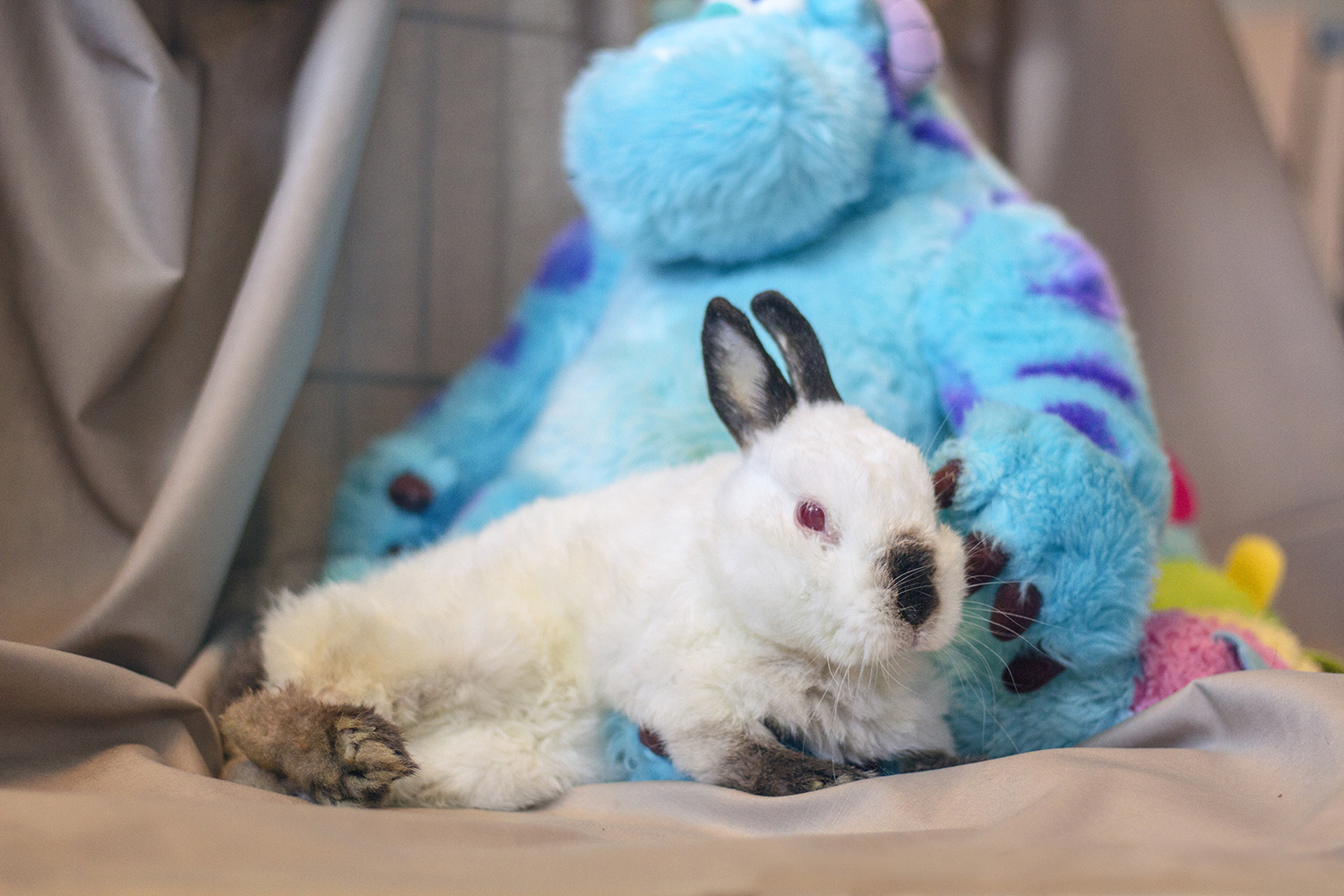 At the time of this picture, Sabrina was starting to lose her mobility. The stuffed toy was the perfect size to help keep her upright.
At the time of this picture, Sabrina was starting to lose her mobility. The stuffed toy was the perfect size to help keep her upright.Photo by Dustin Yoder
Fleece, Pads and Mats
 Microfiber fleece blanket. Even if you don't have a sewing machine, you can hand-stitch the sides together. Microfiber fleece blanket. Even if you don't have a sewing machine, you can hand-stitch the sides together. |
 Polyester batting is more durable than cotton. Once the batting is stitched closed within the fleece, you have a nice bed for your bunny. Polyester batting is more durable than cotton. Once the batting is stitched closed within the fleece, you have a nice bed for your bunny. |
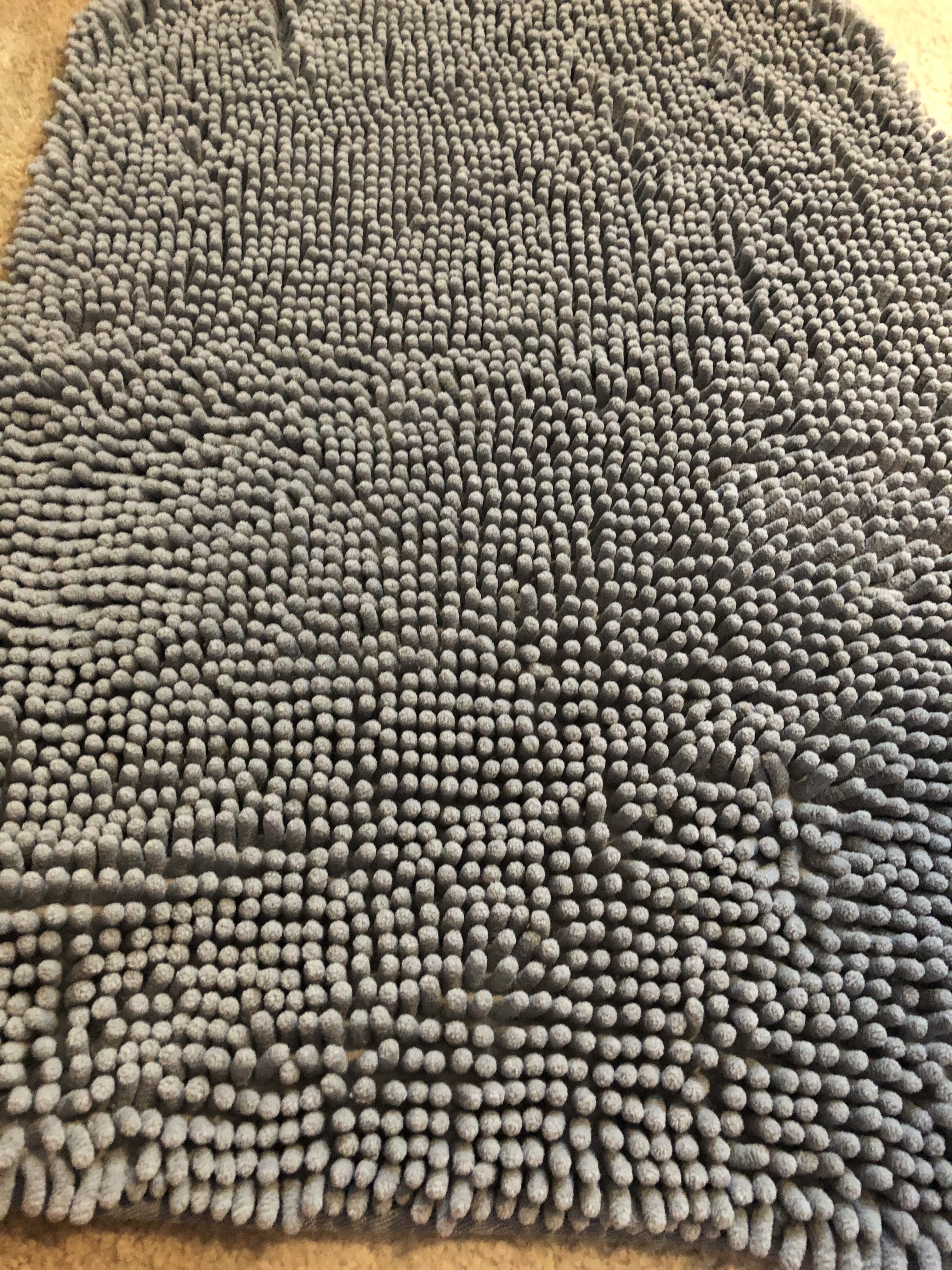 A bath mat can be a good choice, if your bunny does not have an interest in chewing it. This particular mat is excellent in drawing moisture away from the bunny. A bath mat can be a good choice, if your bunny does not have an interest in chewing it. This particular mat is excellent in drawing moisture away from the bunny. |
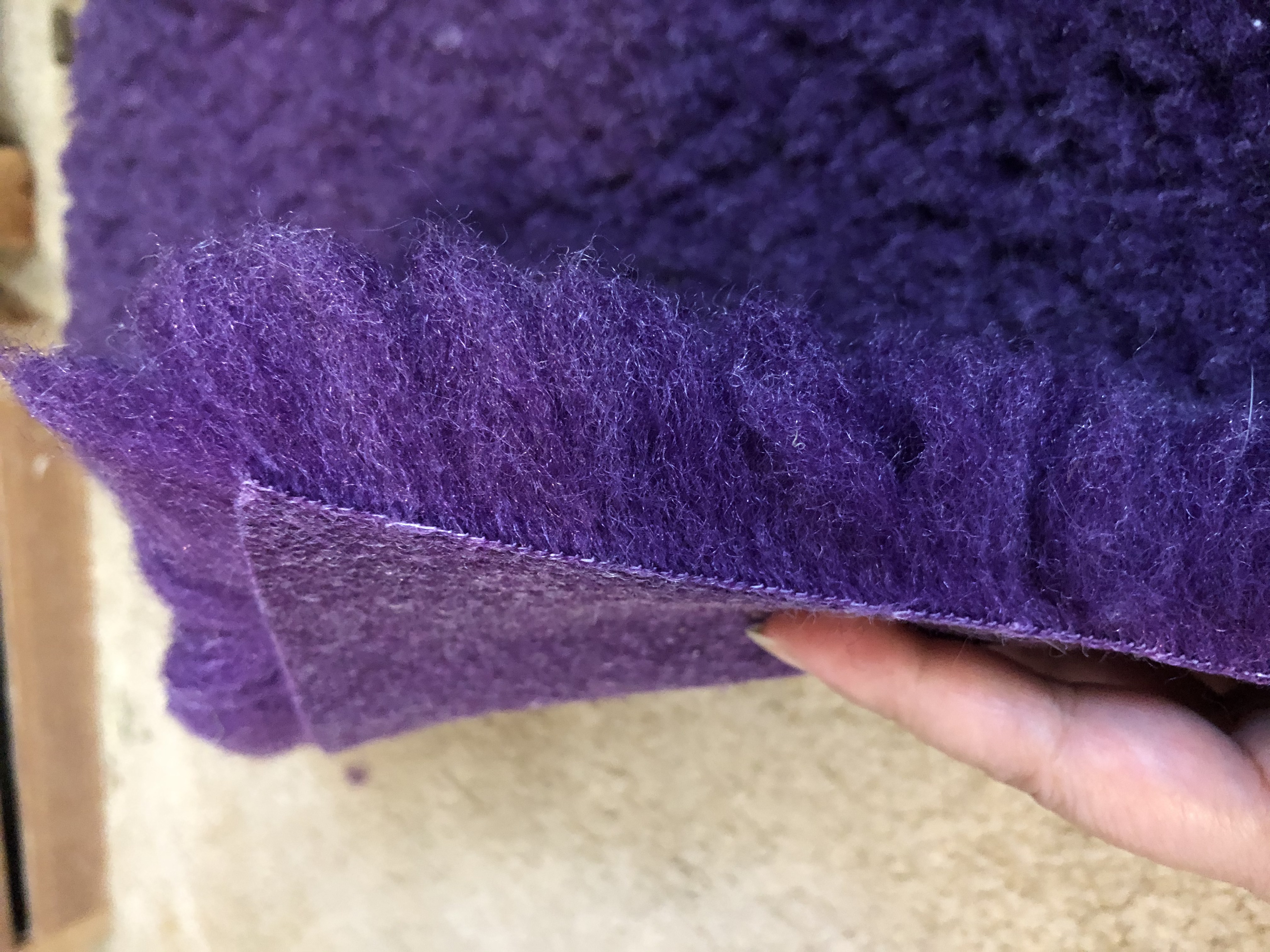 Vet bedding can come in different sizes and colors. The fleece is thick, which ensures the bunny is comfortable and dry. Vet bedding can come in different sizes and colors. The fleece is thick, which ensures the bunny is comfortable and dry. |
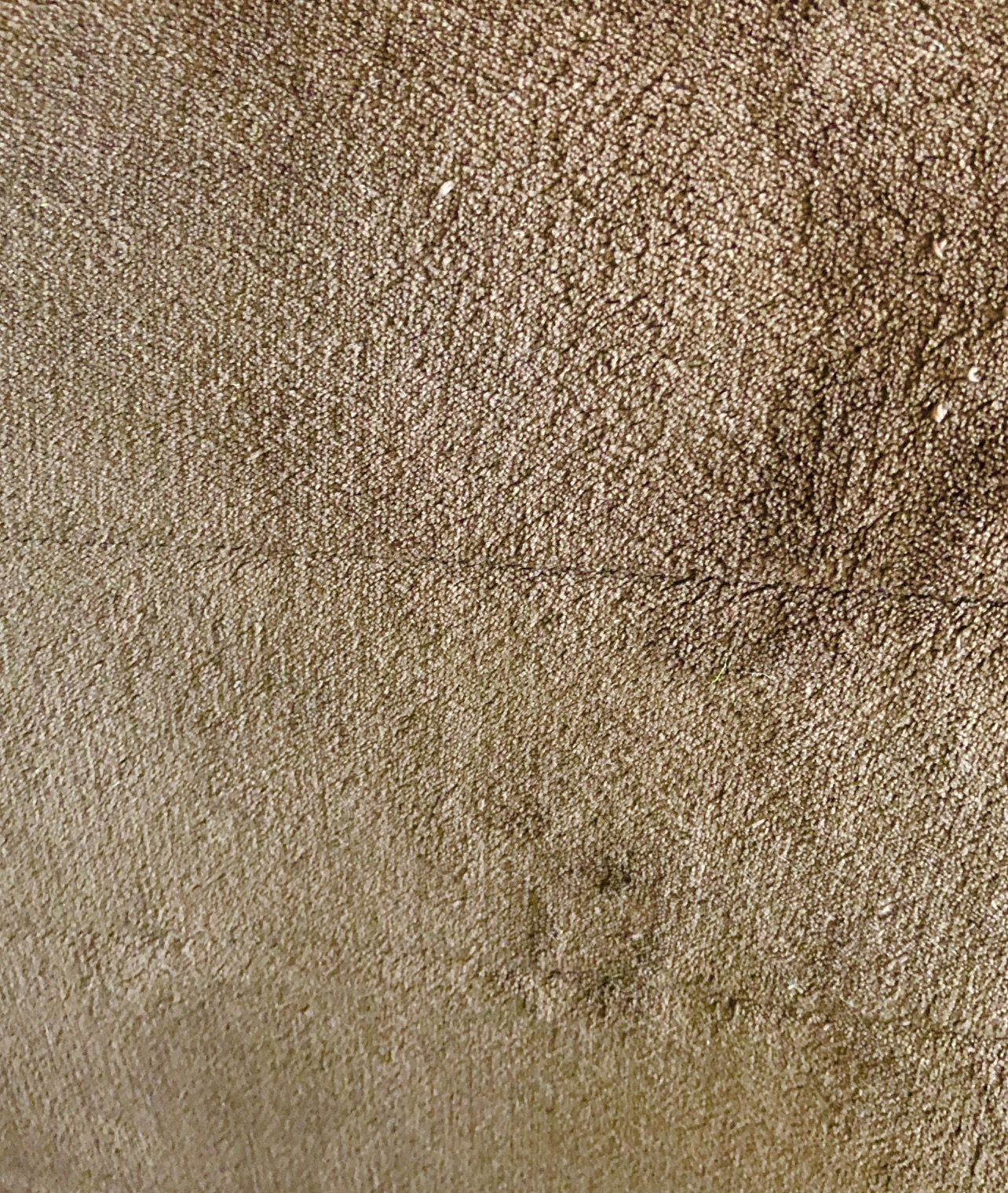 Velvet microfiber bath mats cover memory foam underneath. It provides support for your rear end paralysis bunny while wicking away urine from the skin. However, if your bunny is a chewer, these mats are not a good option.
Velvet microfiber bath mats cover memory foam underneath. It provides support for your rear end paralysis bunny while wicking away urine from the skin. However, if your bunny is a chewer, these mats are not a good option.Environmental Concerns
In recent years, there has been a growing awareness of microplastic pollution in our rivers and oceans. Microplastic originate from many different products, but a major source is synthetic fibers found in textiles, which include nylon and polyester. These tiny fibers break off in the washing machine and pass through the filters in the machine as well as the filters in the water treatment plants. These fibers make their way to rivers and oceans, where they damage the environment.
You may want to try and use natural fibers for your bunny's bedding, but that has the drawback in that these pillows and blankets can be harder to clean and are not as durable.
An alternative is to use a garment bag designed specifically to catch microplastic, such as the Guppyfriend.
Eddie's Bed
I've done a version of Eddie's bed for a number of rear end paralysis bunnies over the years. It's not always the same and it may even evolve over time with the same bunny.
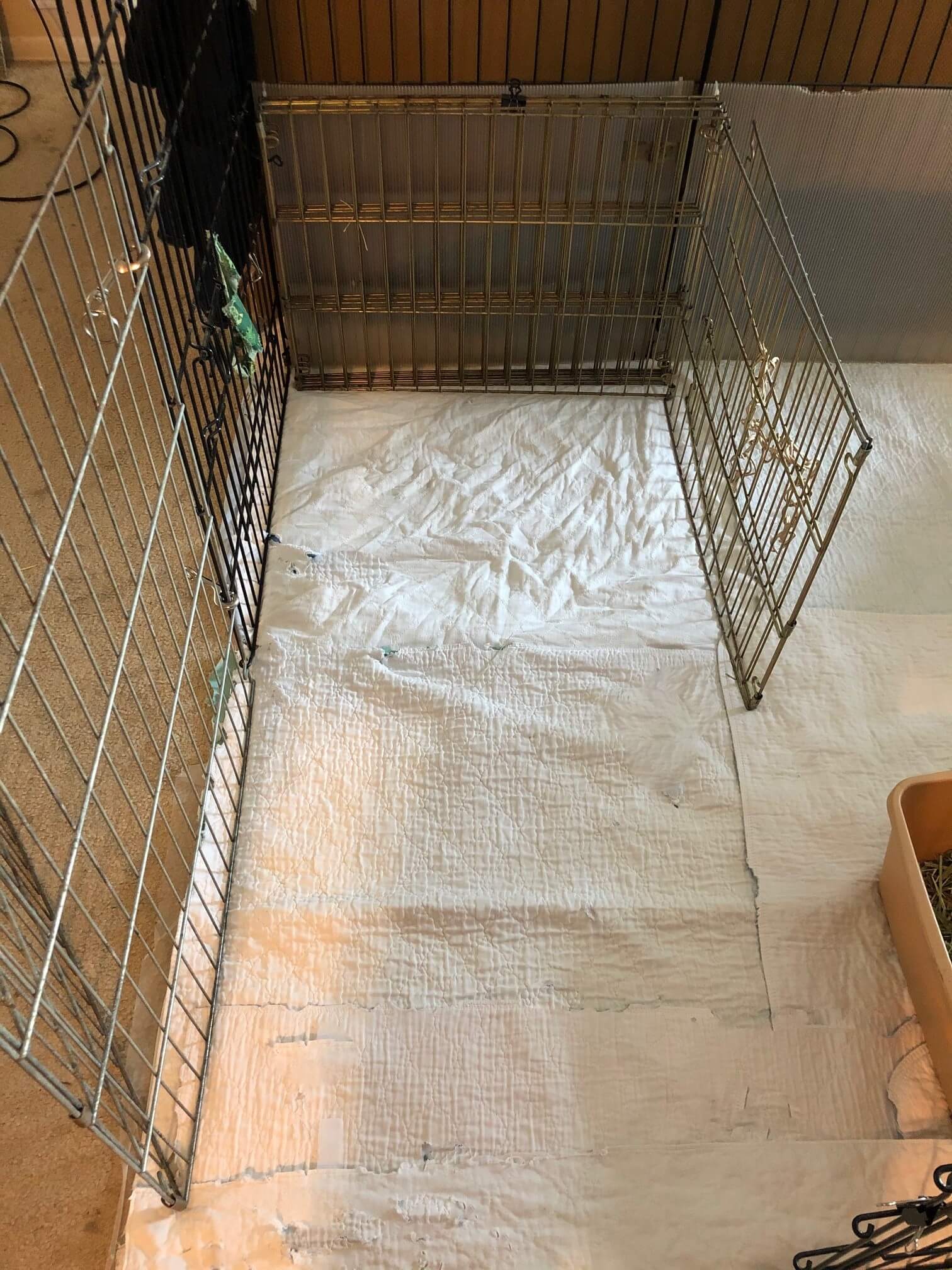 1. The space is a 2x4 pen. The bottom is lined with 2 washable pee pads. 1. The space is a 2x4 pen. The bottom is lined with 2 washable pee pads. |
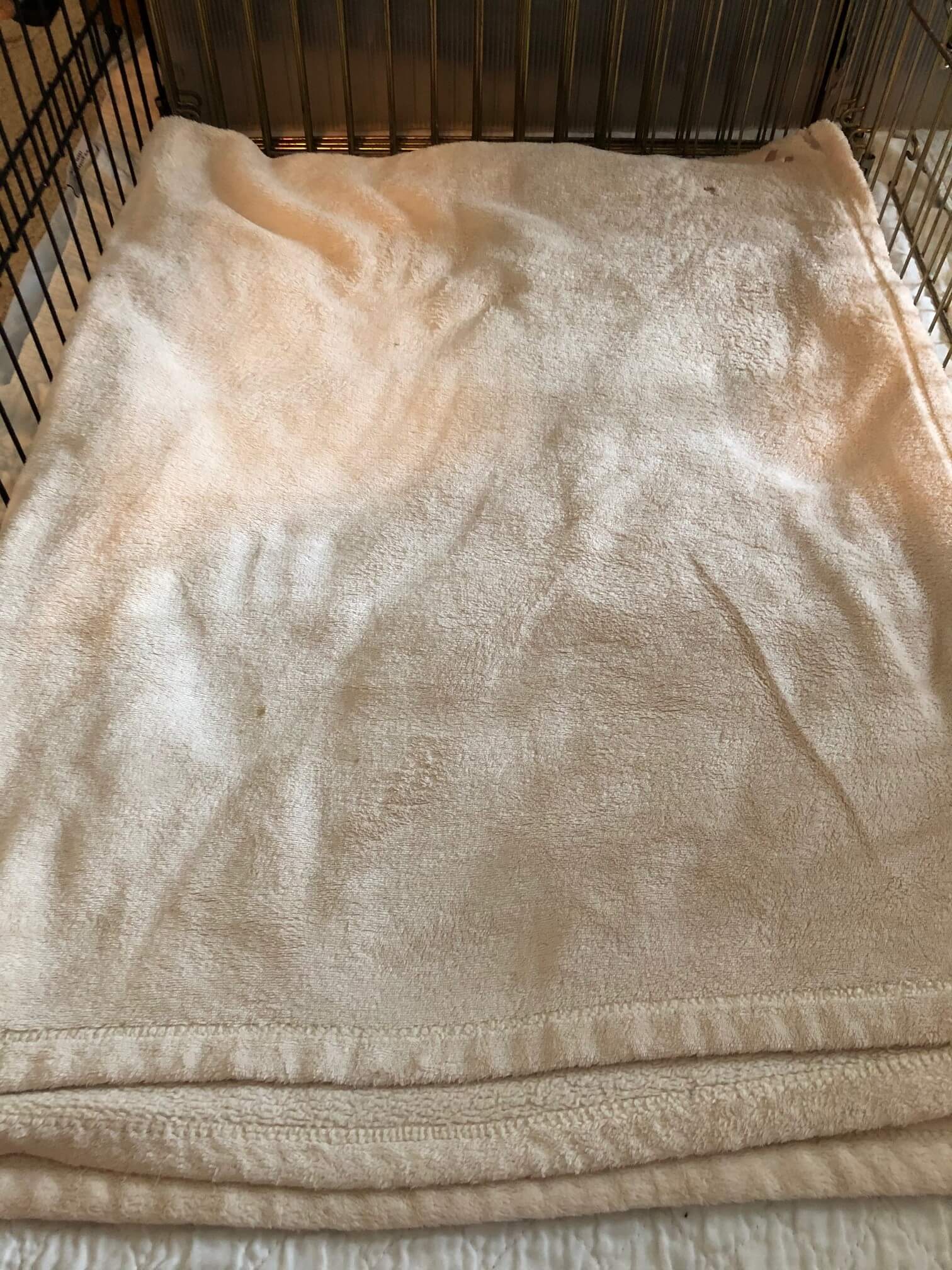 2. A large folded blanket is placed on top. 2. A large folded blanket is placed on top. |
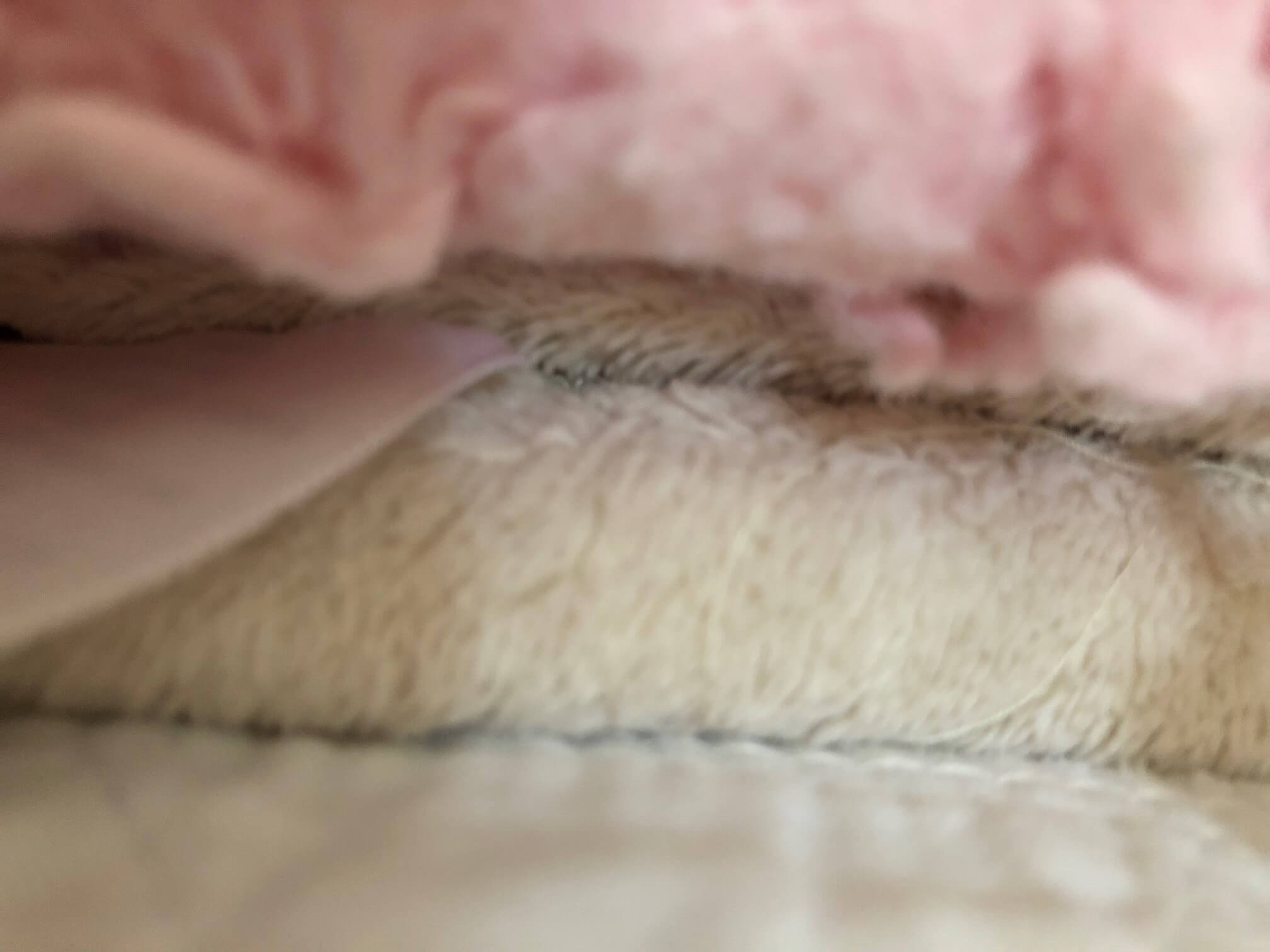 3. You can see the two folds of the beige blanket. I've topped it with another thick pink blanket. 3. You can see the two folds of the beige blanket. I've topped it with another thick pink blanket.4. A washable pee pad is placed on top. The pee pad ensures that I don't have to wash the bottom layers daily. |
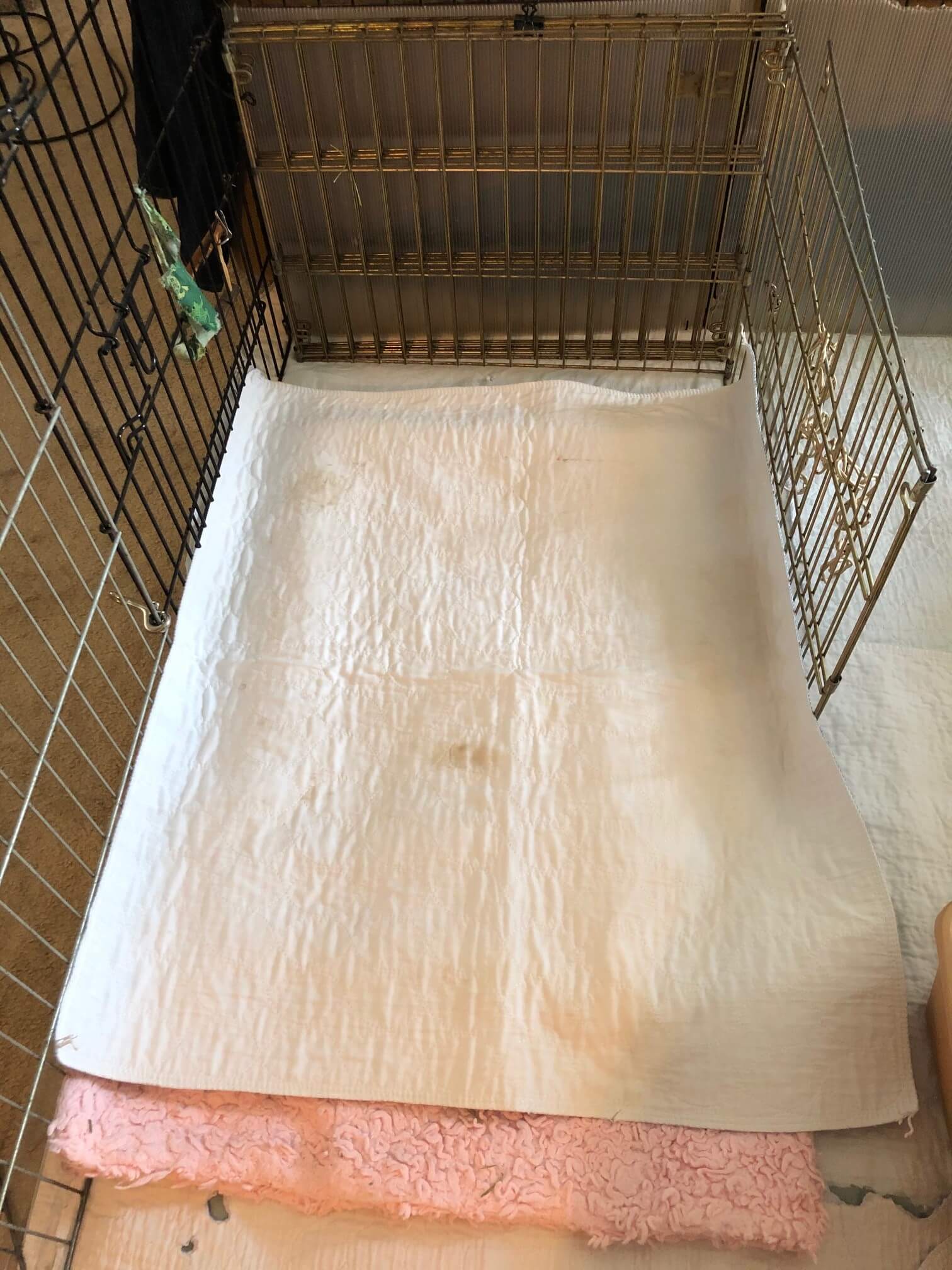 |
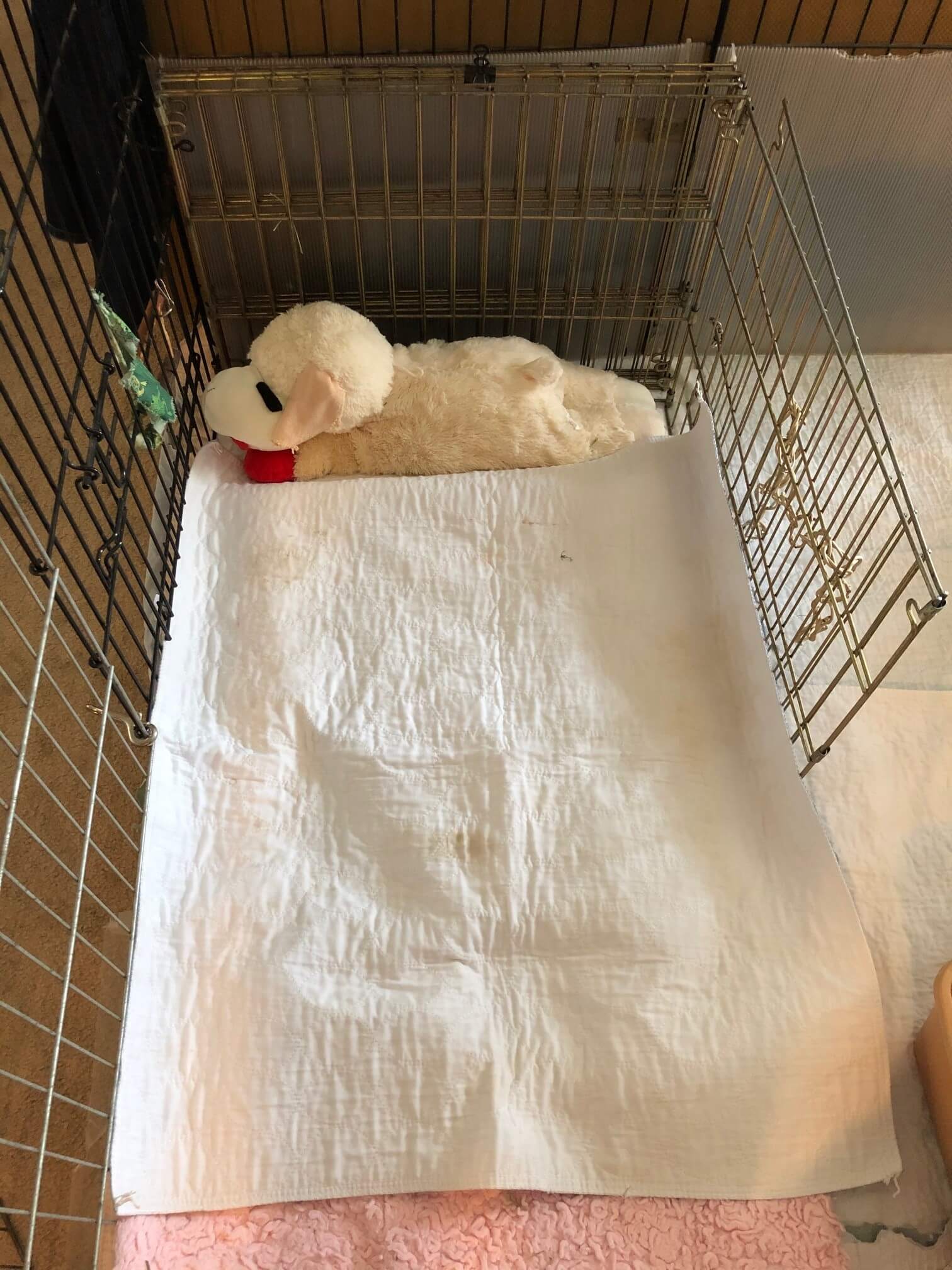 5. Lamb Chop, the large dog toy, is placed on one end. 5. Lamb Chop, the large dog toy, is placed on one end. |
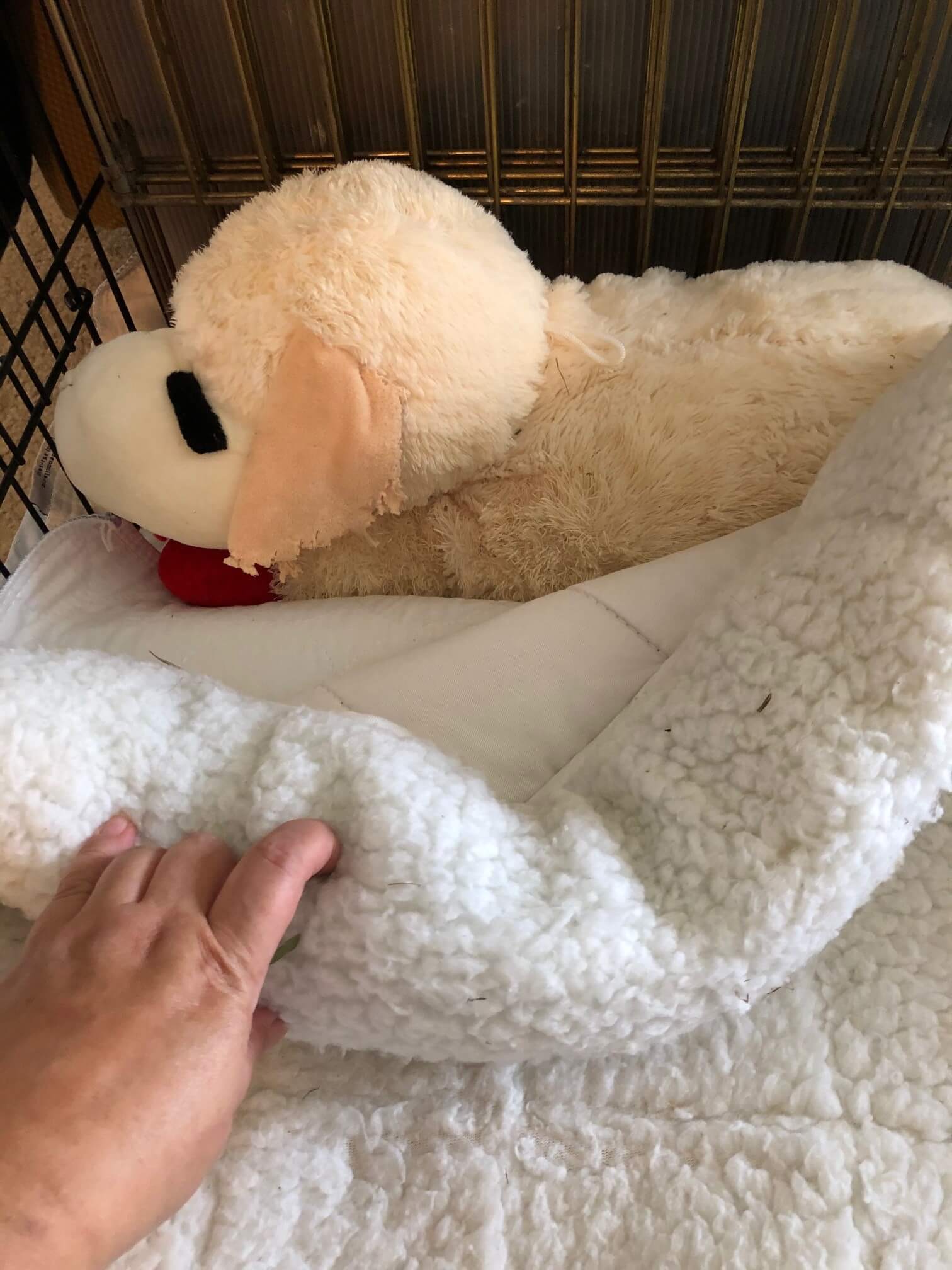 6. A large pet bed is placed on top. 6. A large pet bed is placed on top. |
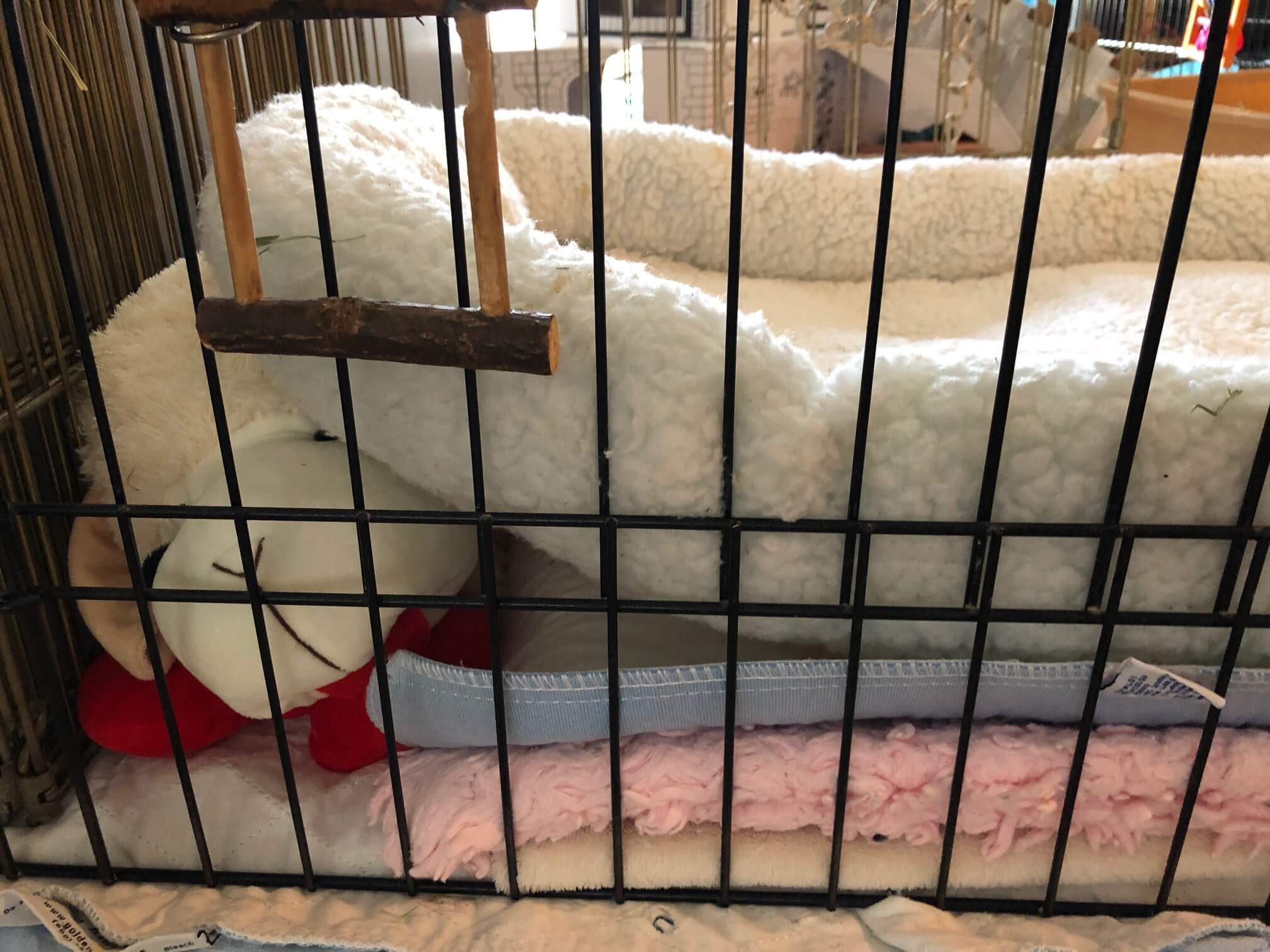 7. Another angle. The dog toy raises the end of the bed slightly to ensure Eddie is slightly propped up and does not roll off the bed. 7. Another angle. The dog toy raises the end of the bed slightly to ensure Eddie is slightly propped up and does not roll off the bed.8. A large beach towel is folded and placed on the center of the pet bed. |
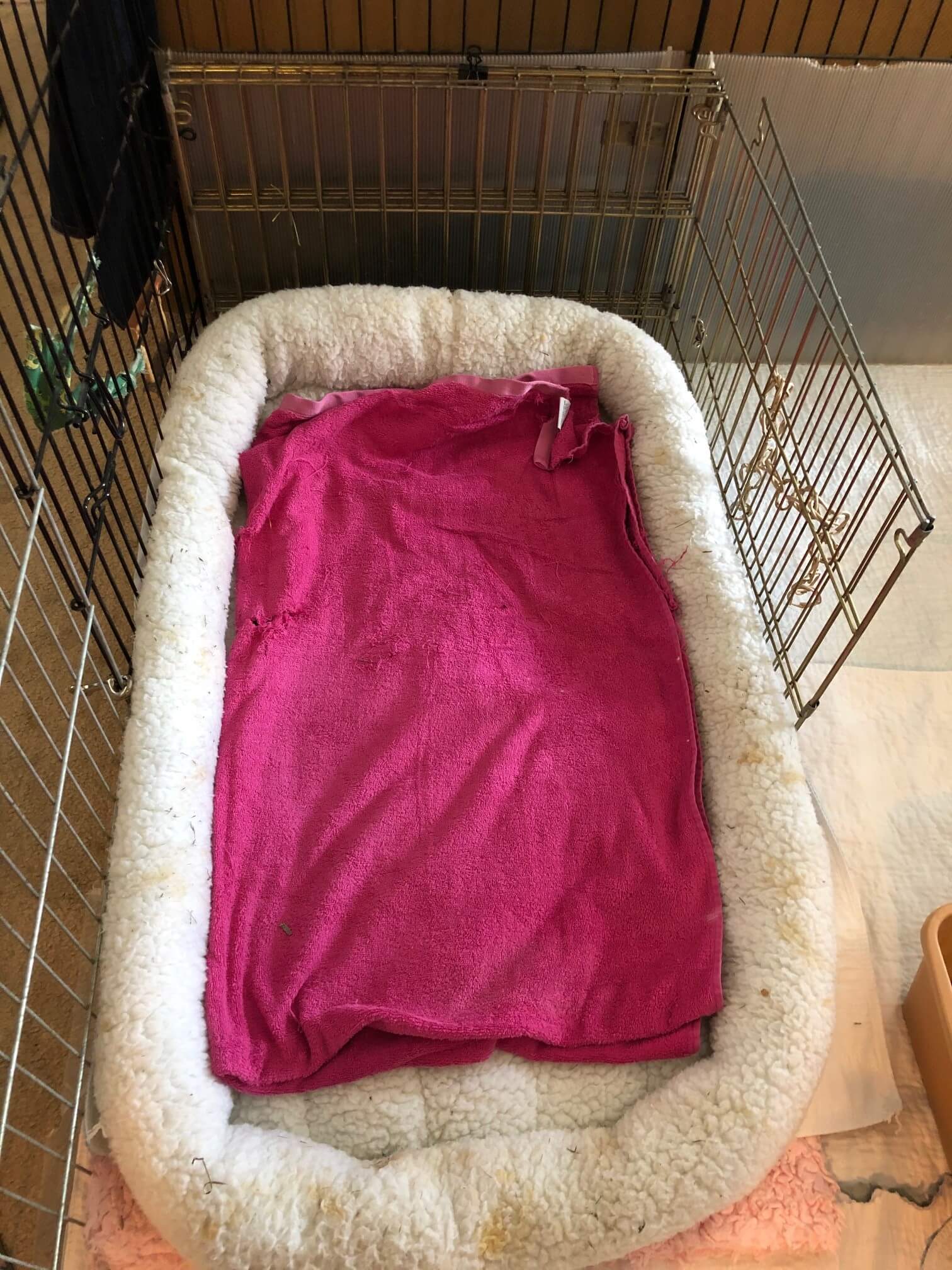 |
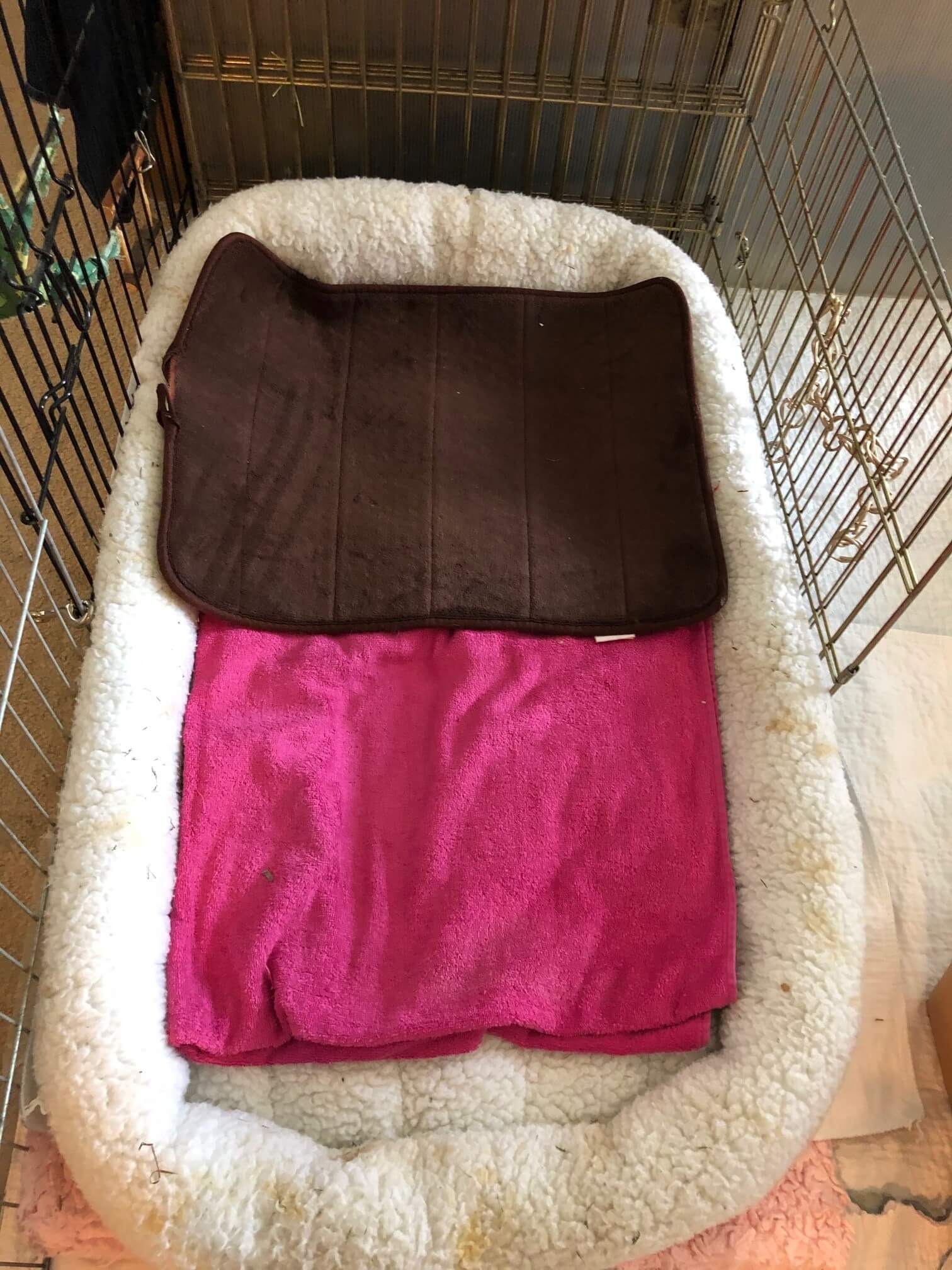 9. Microfiber memory foam bath mats are placed on top of the towel, adding more padding. 9. Microfiber memory foam bath mats are placed on top of the towel, adding more padding. |
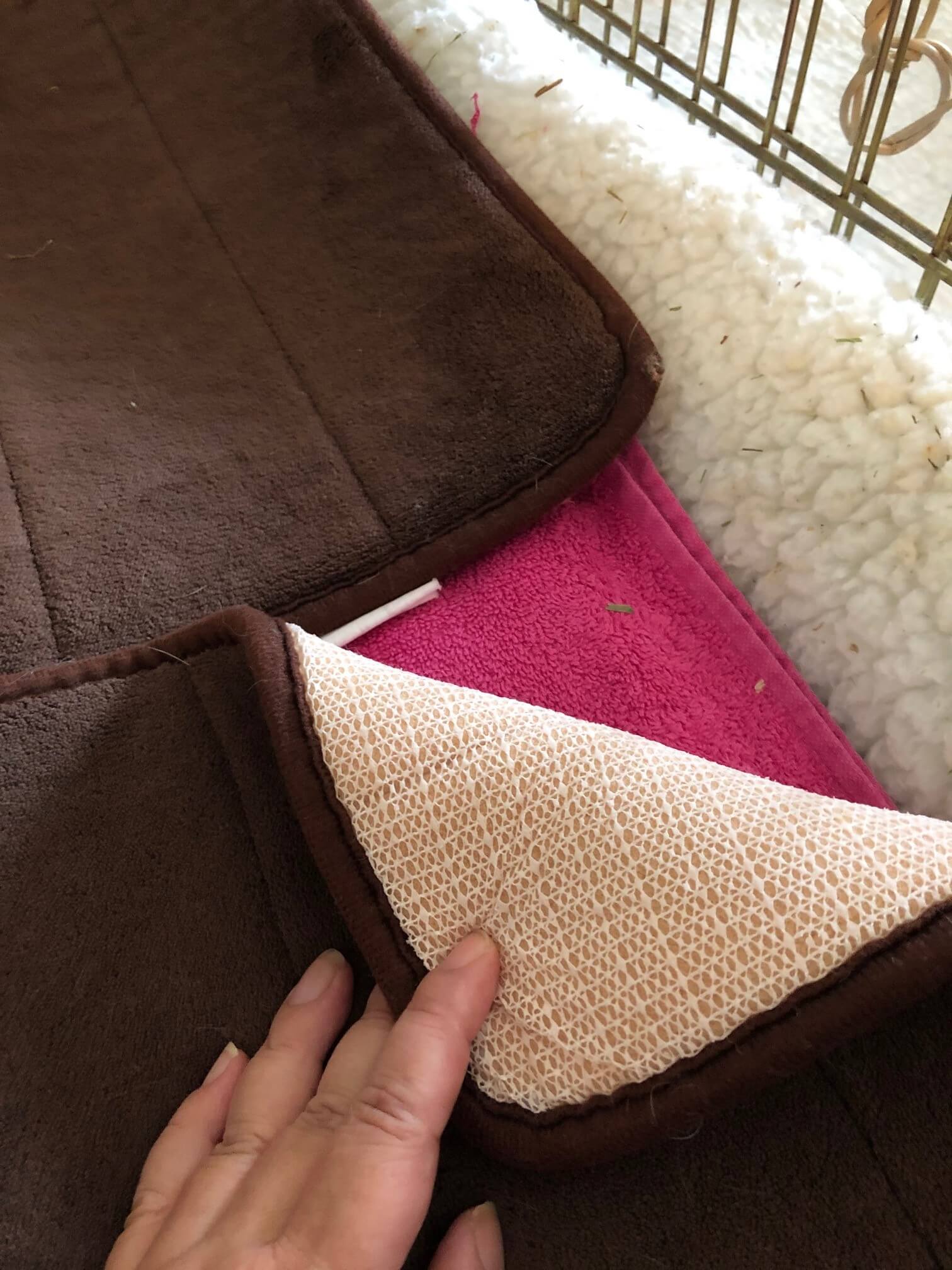 |
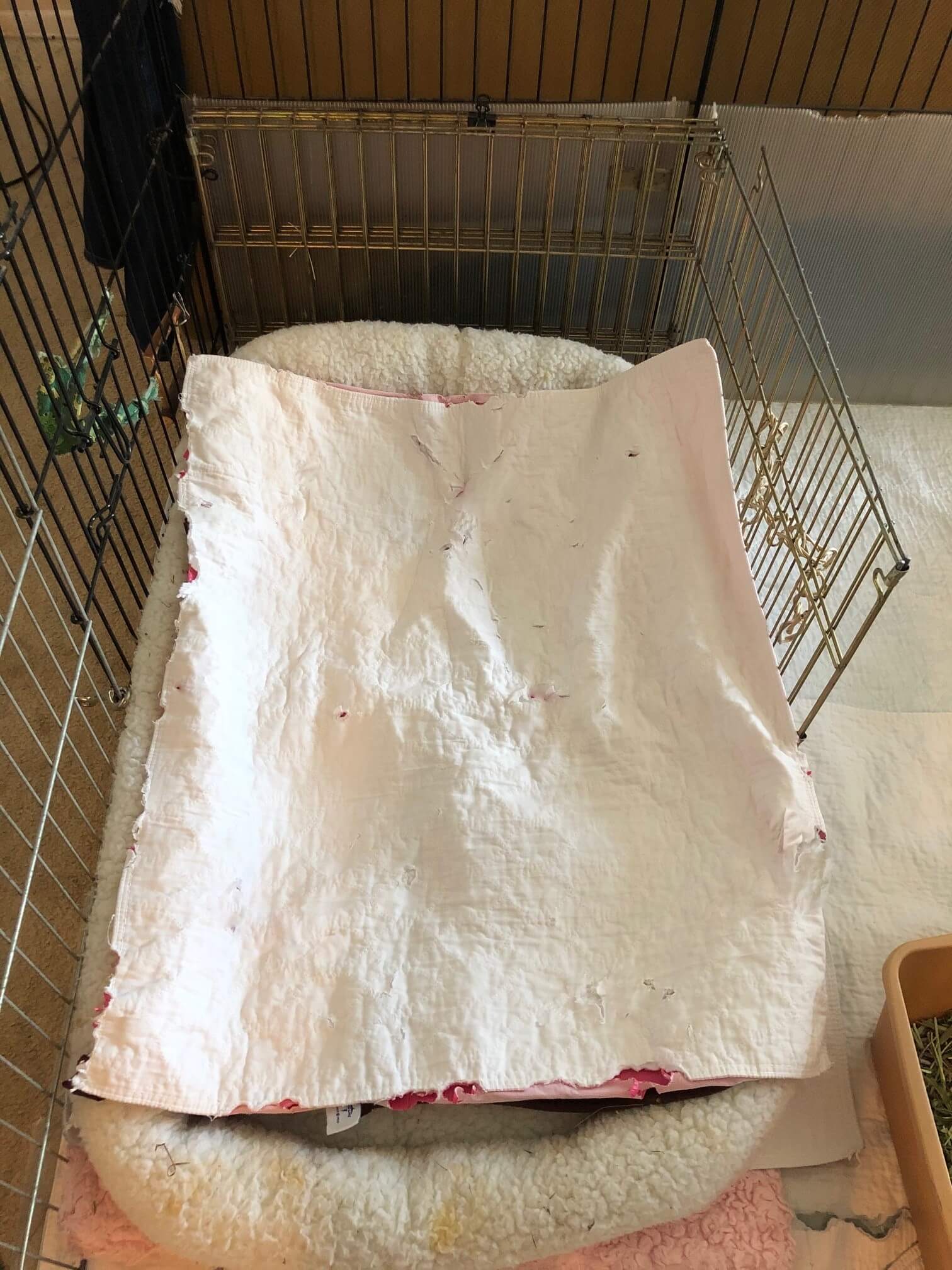 |
 10. Another washable pee pad is placed on top. This ensures everything underneath stays clean. 10. Another washable pee pad is placed on top. This ensures everything underneath stays clean.11. A handmade fleece pillow is placed on top. This will be changed twice daily. |
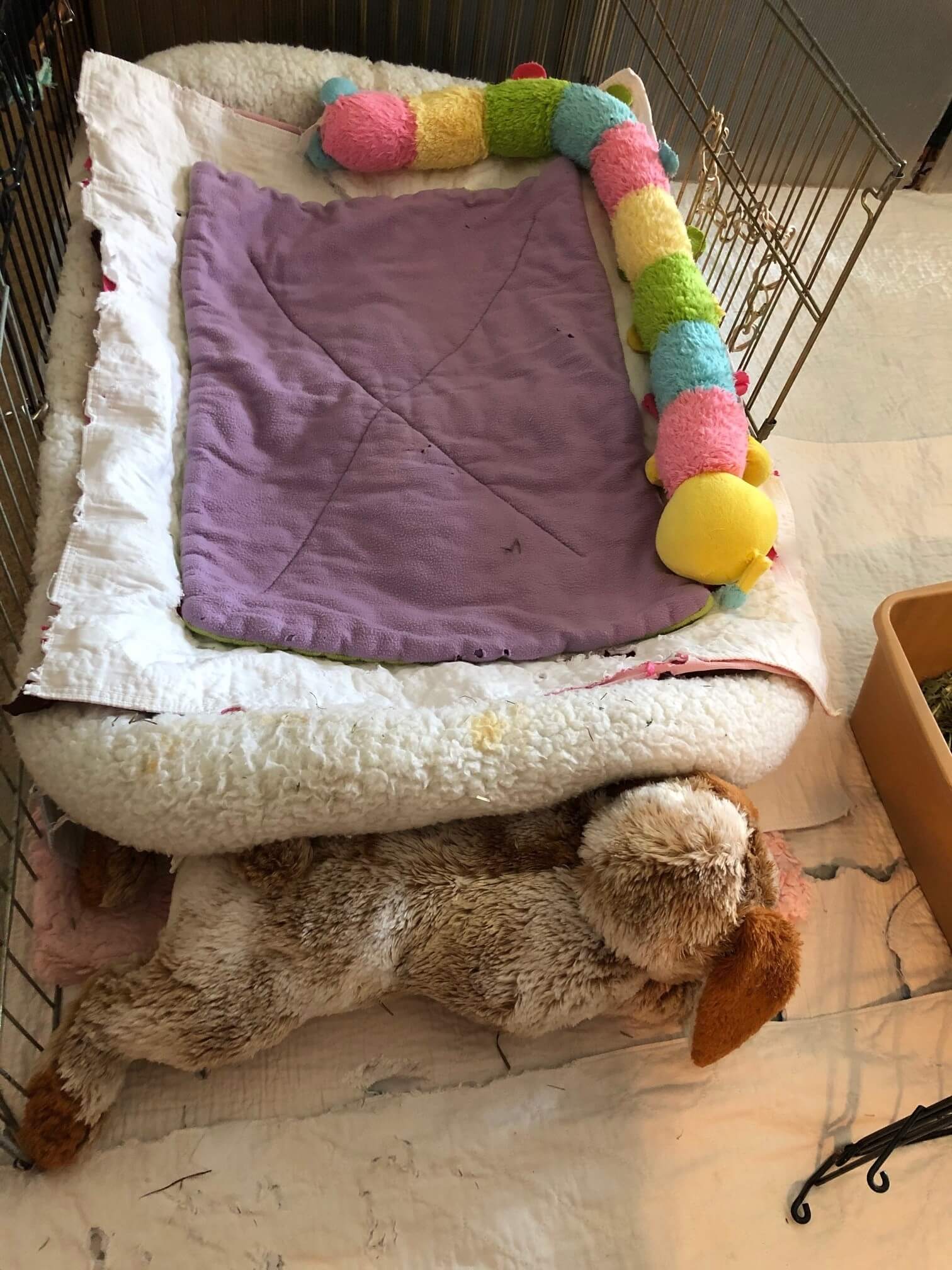 12. Caterpillar puppy chew toy acts like a bumper, keeping Eddie from being caught in the pen bars and providing some support. 12. Caterpillar puppy chew toy acts like a bumper, keeping Eddie from being caught in the pen bars and providing some support. |
 13. Adding more pillows and stuffed animals as needed to keep Eddie on the bed. 13. Adding more pillows and stuffed animals as needed to keep Eddie on the bed. |
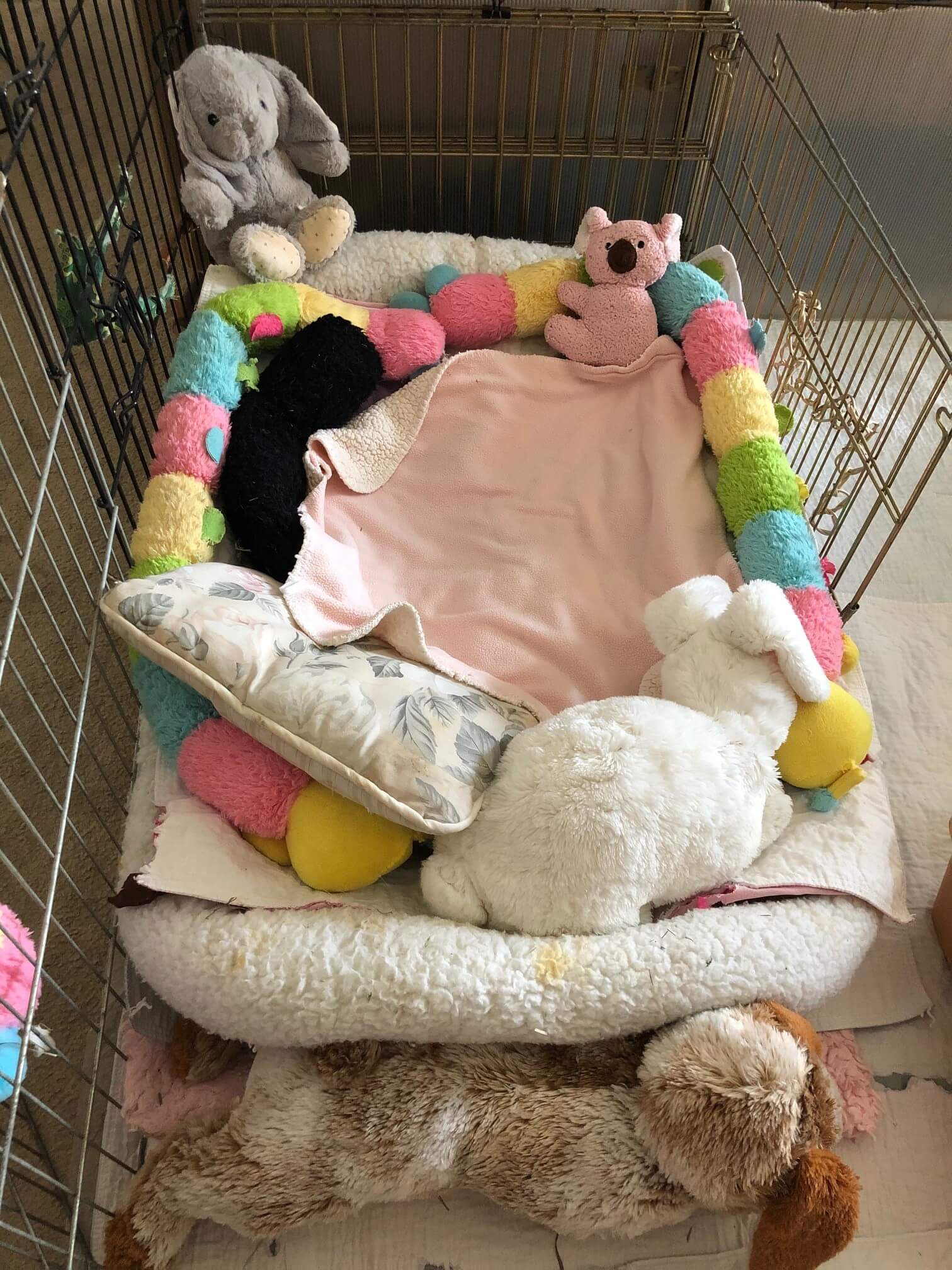 14. Another large dog toy is placed at the end to angle the bed slightly up. 14. Another large dog toy is placed at the end to angle the bed slightly up. |
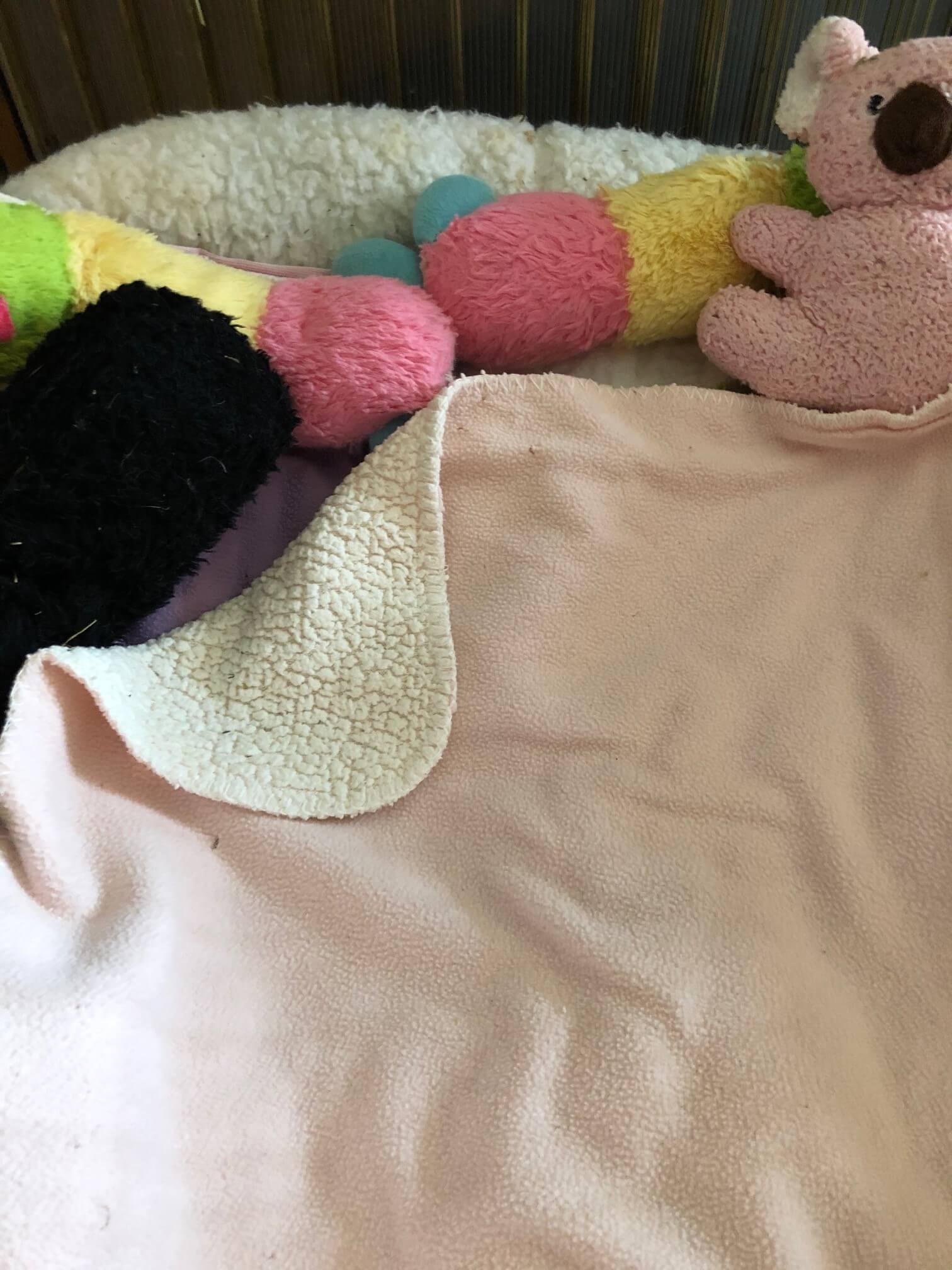 15. Cat blankie used to give an extra layer of comfort. This will be changed twice a day. 15. Cat blankie used to give an extra layer of comfort. This will be changed twice a day. |
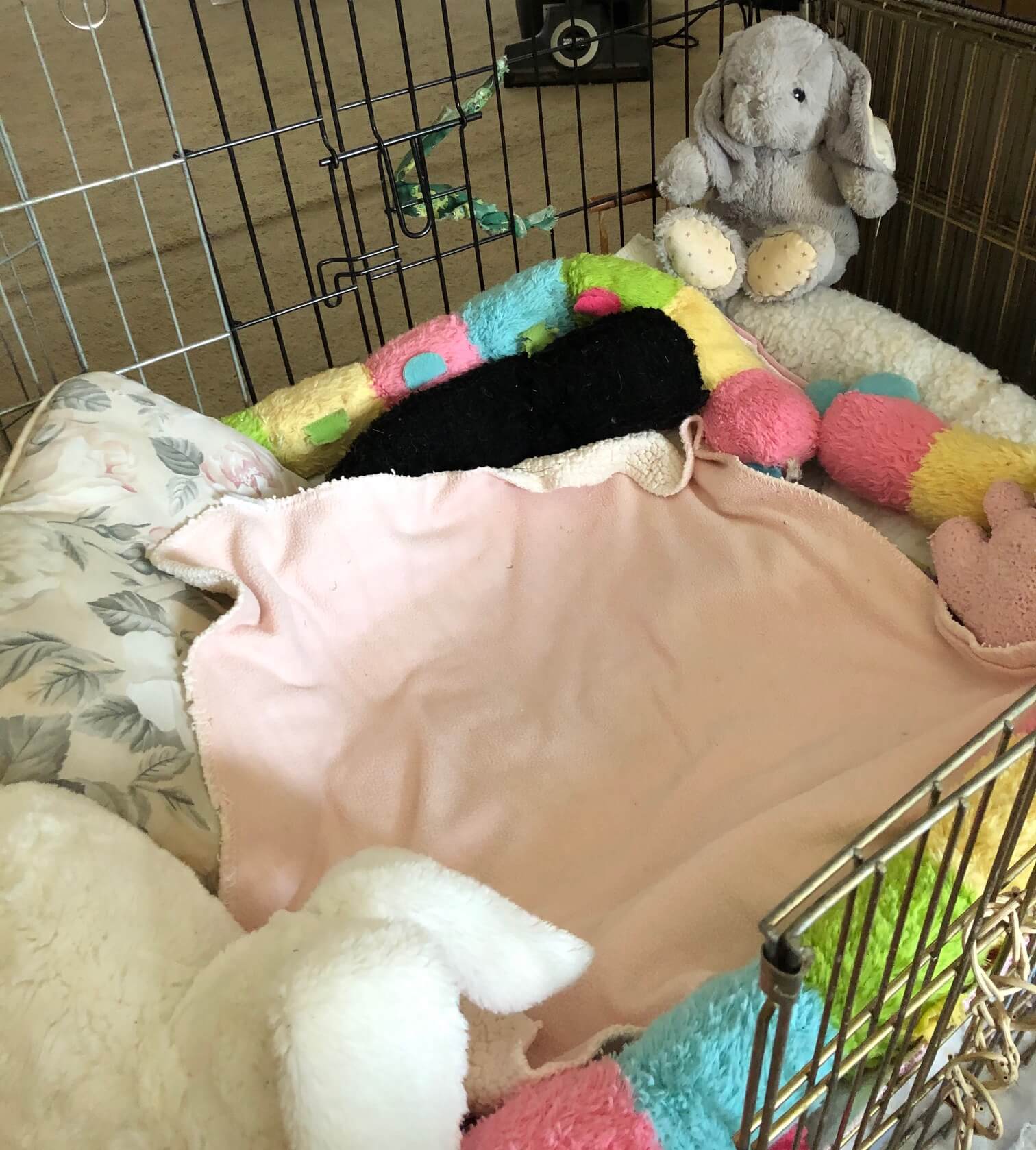 16. Another view of the bed. 16. Another view of the bed. |
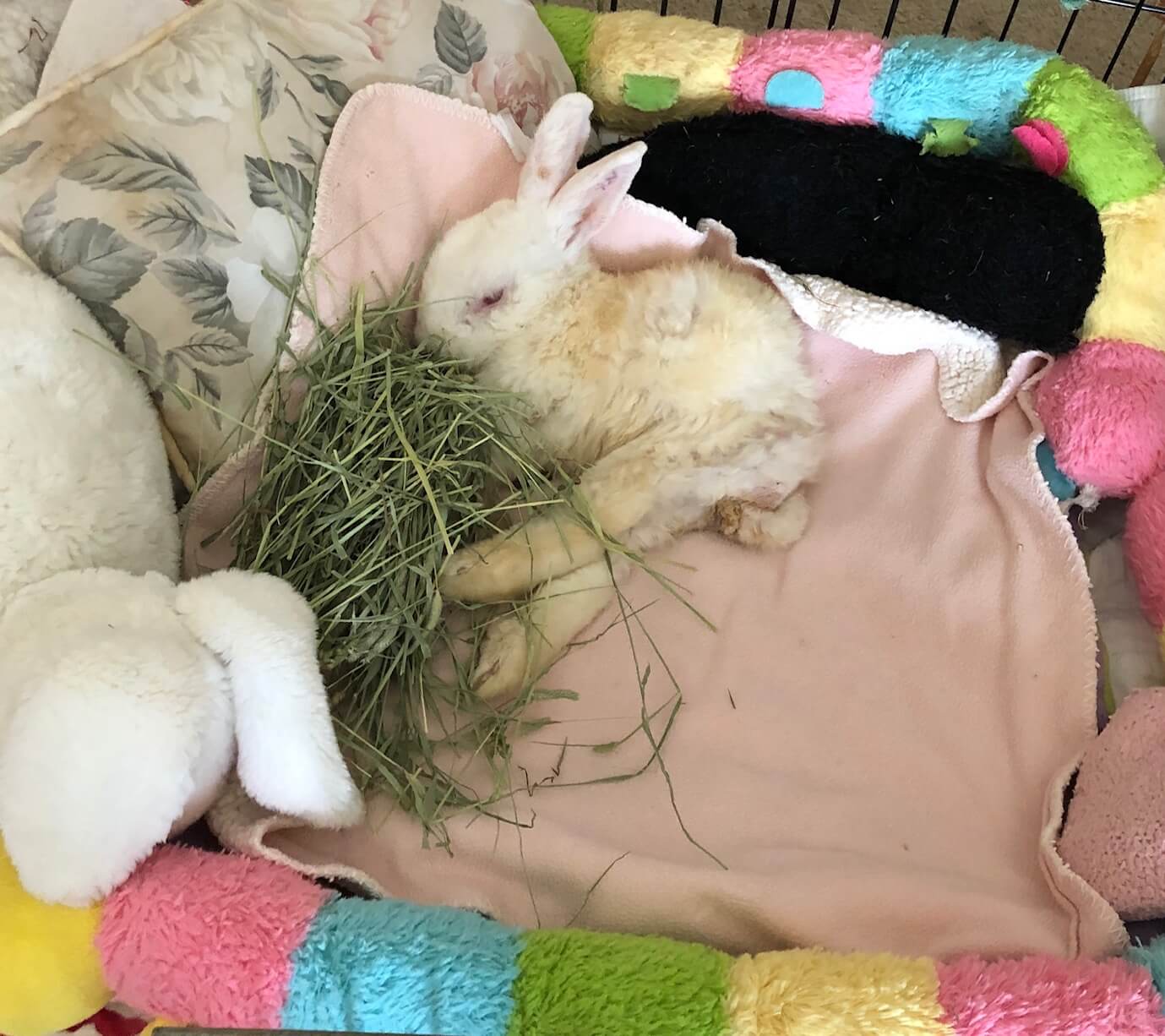 17. Eddie is reclining comfortably in his bed with some hay. He has plenty of room to adjust himself as needed. 17. Eddie is reclining comfortably in his bed with some hay. He has plenty of room to adjust himself as needed. |
The bed above is set up so I will only need to change the top layer or two. I can remove the pillows and toys, roll up the top pee pad and replace. Everything else stays clean and dry.
Pressure Sores
Pressure sores can form when a rabbit lies in one position and is unable to change into another. The skin becomes damaged where the blood circulation is interrupted too long. Areas where the bones sit close to the skin, such as the hips, shoulders and ankles, are particularly vulnerable to sores. If left alone, the skin breaks down and becomes necrotic, thus introducing an infection into the body.
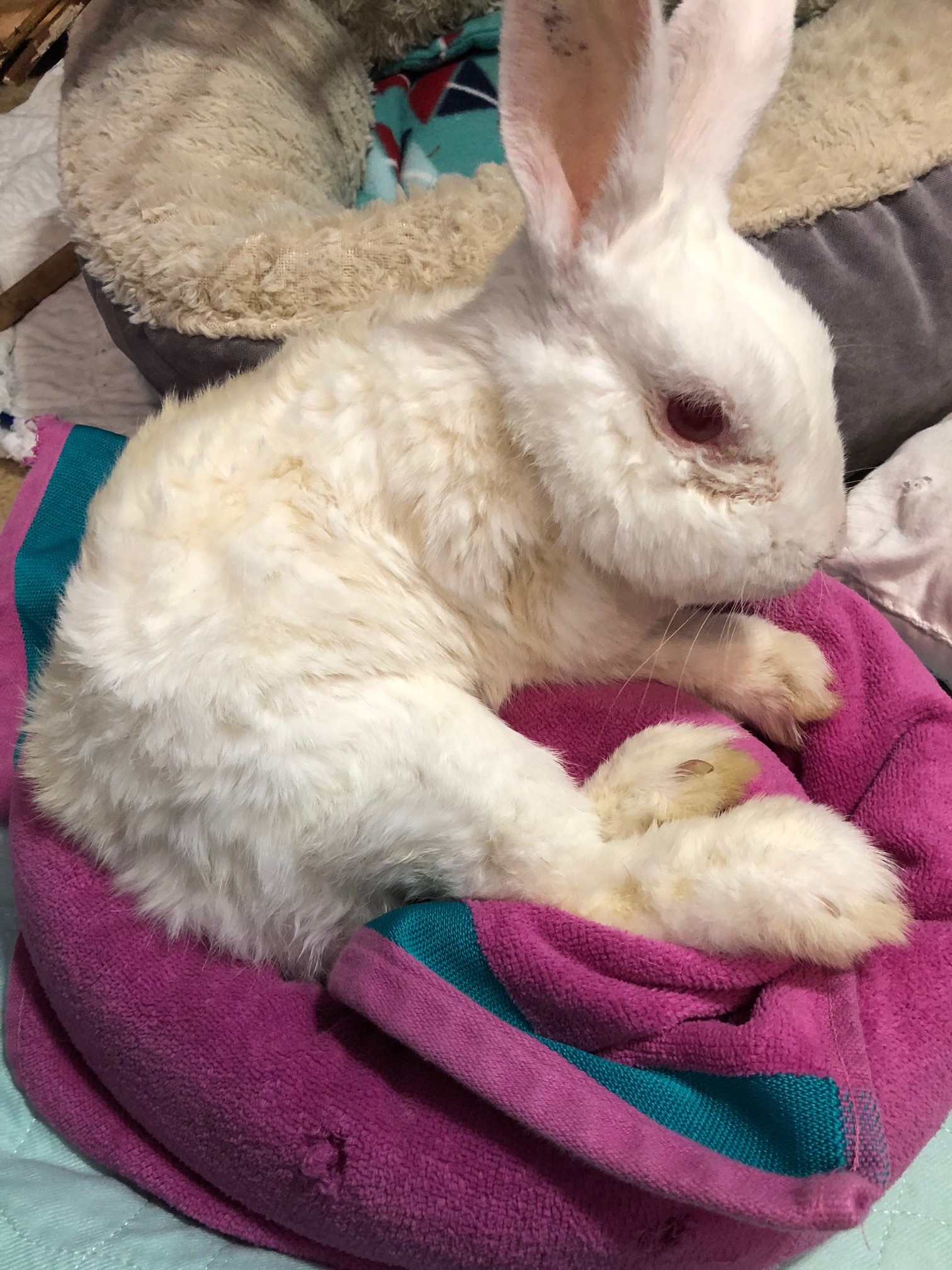 Eddie is demonstrating what to do if there is a pressure sore on the hip. I have rolled up a large towel and twisted it into a circular shape and settled Eddie on top. This 'donut' alleviates pressure on the wound and allows it to heal.
Eddie is demonstrating what to do if there is a pressure sore on the hip. I have rolled up a large towel and twisted it into a circular shape and settled Eddie on top. This 'donut' alleviates pressure on the wound and allows it to heal.Pressure sores can form quickly and take a long time to heal. The best way to avoid them is to add several layers of bedding and to change the bunny's position often.
Usually, a bunny with rear end paralysis has a favorite position, and will panic if he finds himself on the opposite side. Do not force him to lie on his 'bad' side if he doesn't want to as this will stress him out. However, you can avoid pressure sores by handling him or getting him to exercise (if he is still able). Eddie is still active enough that he does not stay in one place on the bed, and occasionally, he'll twist himself around to lay on his opposite side on his own.
Make sure his bedding is clean. If he is lying in urine, that will only increase the likelihood of damage to the skin.
Carefully inspect the skin twice a day. If there is a spot that is red, blistered or bleeding, clean the wound and add a small amount of neosporin (original version only) or silver sulfadiazine cream (prescription only) onto the wound. Allow the wound to completely heal before allowing your bunny to lie on that side again. You can use egg crate foam underneath a towel or fleece, or you can twist a towel into a donut. Both methods relieve pressure on the wound.
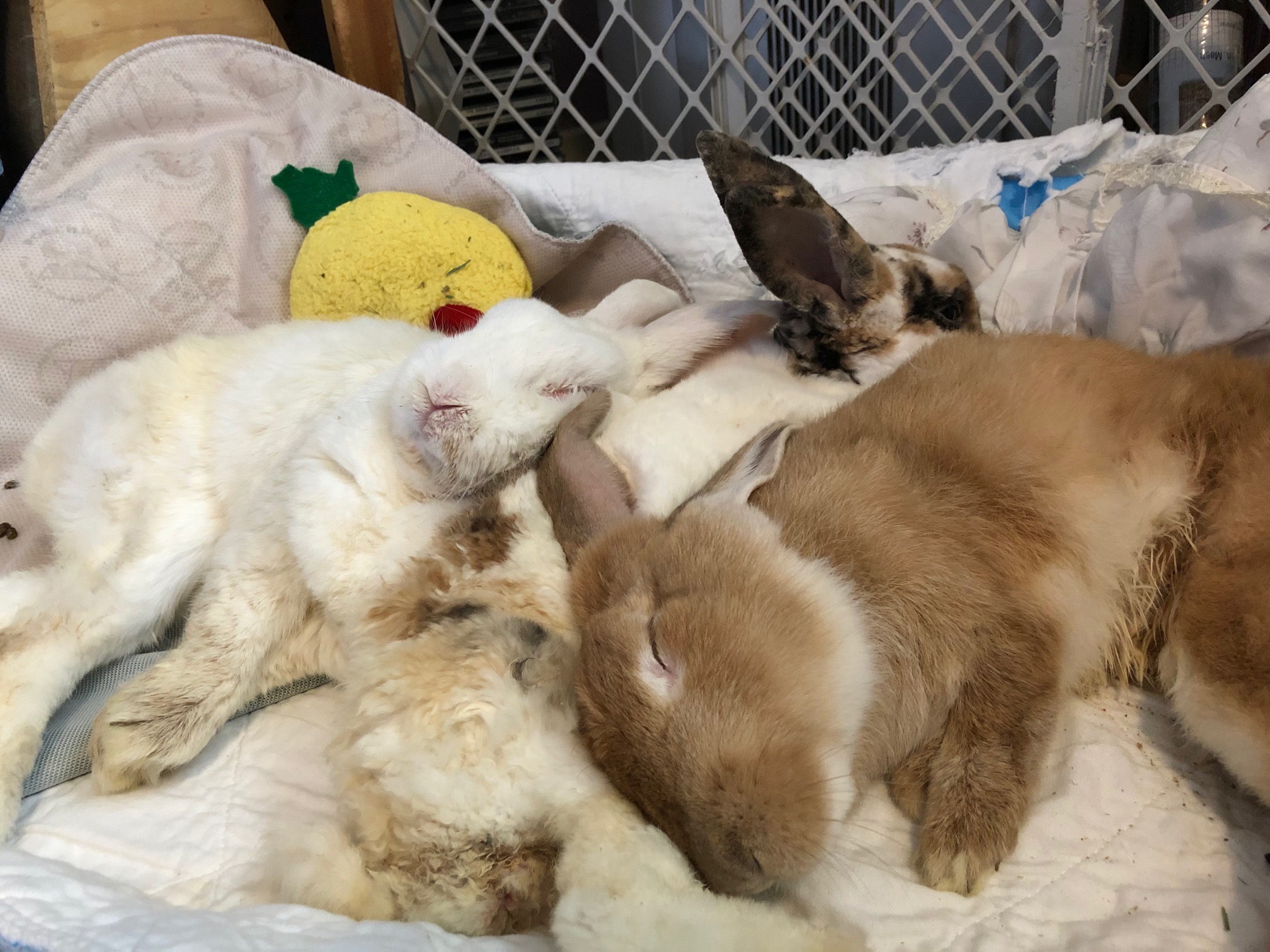 Eddie, Roxanne and Poppy taking an afternoon nap in my office.
Eddie, Roxanne and Poppy taking an afternoon nap in my office.Rear End Paralysis Care: Socialization
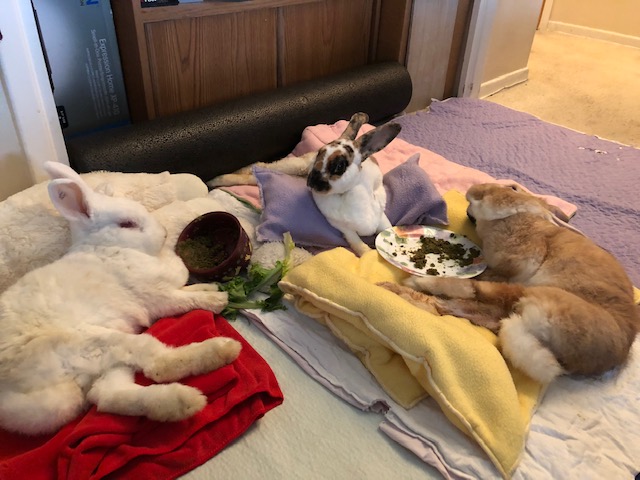 Eddie, Roxanne and Poppy enjoying movie night.
Eddie, Roxanne and Poppy enjoying movie night.Disabled bunnies still enjoy social interaction with both other bunnies and with you, their caretaker.
In my experience, I've found this true for every rear end paralysis bunny I've met. Even those bunnies, who were very shy around people in their younger years, easily let themselves be fussed over. I like to think that they realize their limitations and welcome the extra attention and love that goes into their care.
As mentioned previously, a disabled bunny can still live in the same pen with his more able friends, provided they do not become aggressive or steal food. Aggressive behavior may include biting, nipping and/or mounting. Sometimes this may happen, especially with a bigger group of rabbits. If it's constant or if the attacks are particularly aggressive, your disabled bunny may need to be separated all or at least part of the time. The best way is to maintain the bond is to create a smaller pen within the larger, so your disabled bunny can still be near his friends. You may even try short supervised interactions. The separation may be temporary or permanent, depending on the personalities involved.
Switch It Up!
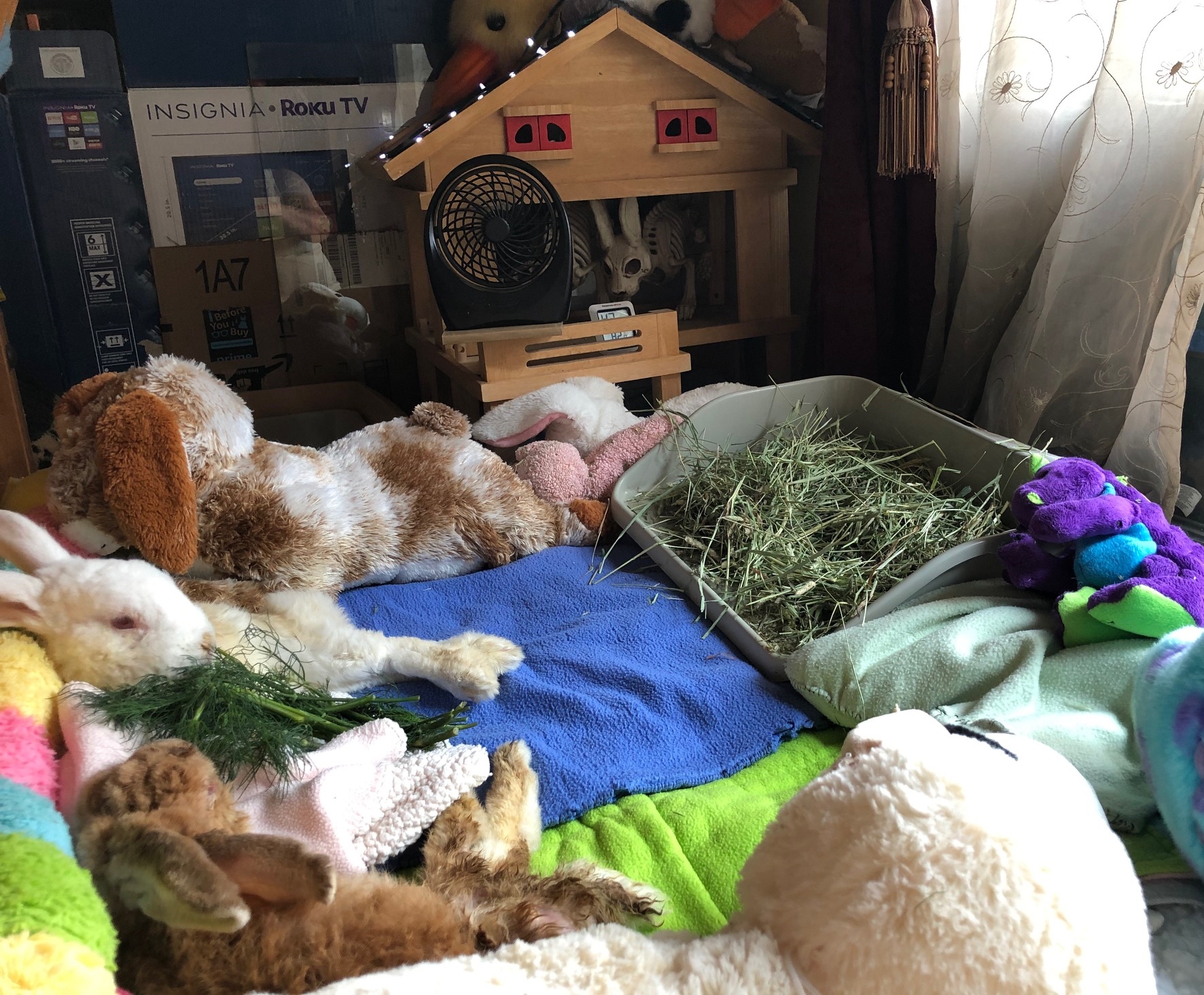 Eddie and Poppy enjoying the summer air on their temporary bed, looking out onto the balcony.
Eddie and Poppy enjoying the summer air on their temporary bed, looking out onto the balcony.Even if your disabled bunny has a bunny friend, give him something new to look at. If I know I will be spending the day in the office, I will set up a little bed next to me so I can keep an eye on Eddie as I work. If I want to spend the afternoon binging on Netflix, I will make room on the couch.
The temporary set-up (or daybed as I like to call it) does not have to be elaborate. I will place a pee pad on the floor (or couch), then put a cat bed on top of it and place a towel or small fleece blanket inside.
This change of scenery will help stimulate your bunny mentally, and it can also be a great time to bond with him.
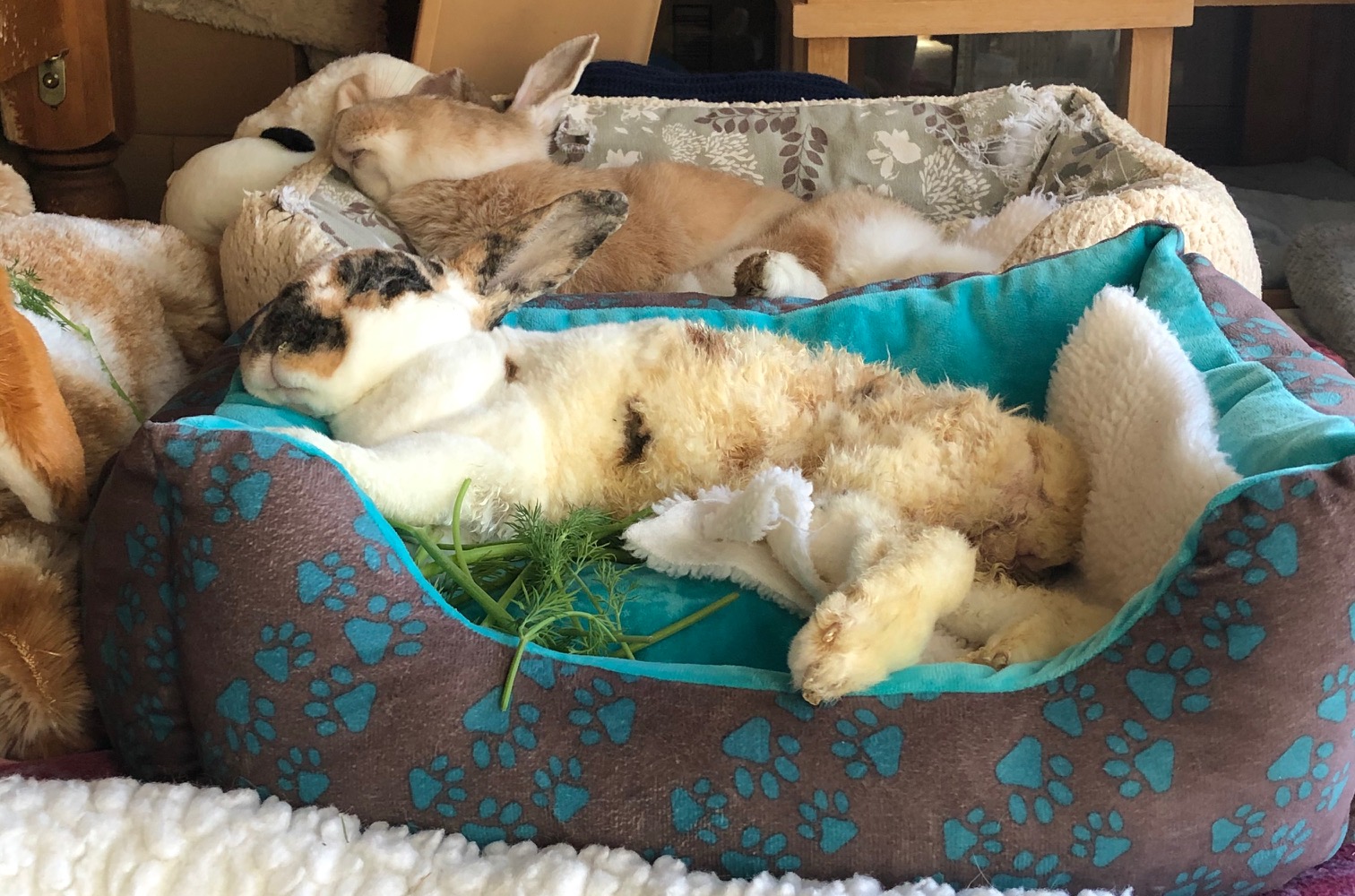 Poppy and Roxanne specialized in the synchronized nap in their favorite afternoon spot.
Poppy and Roxanne specialized in the synchronized nap in their favorite afternoon spot.


